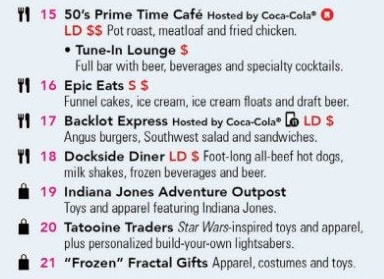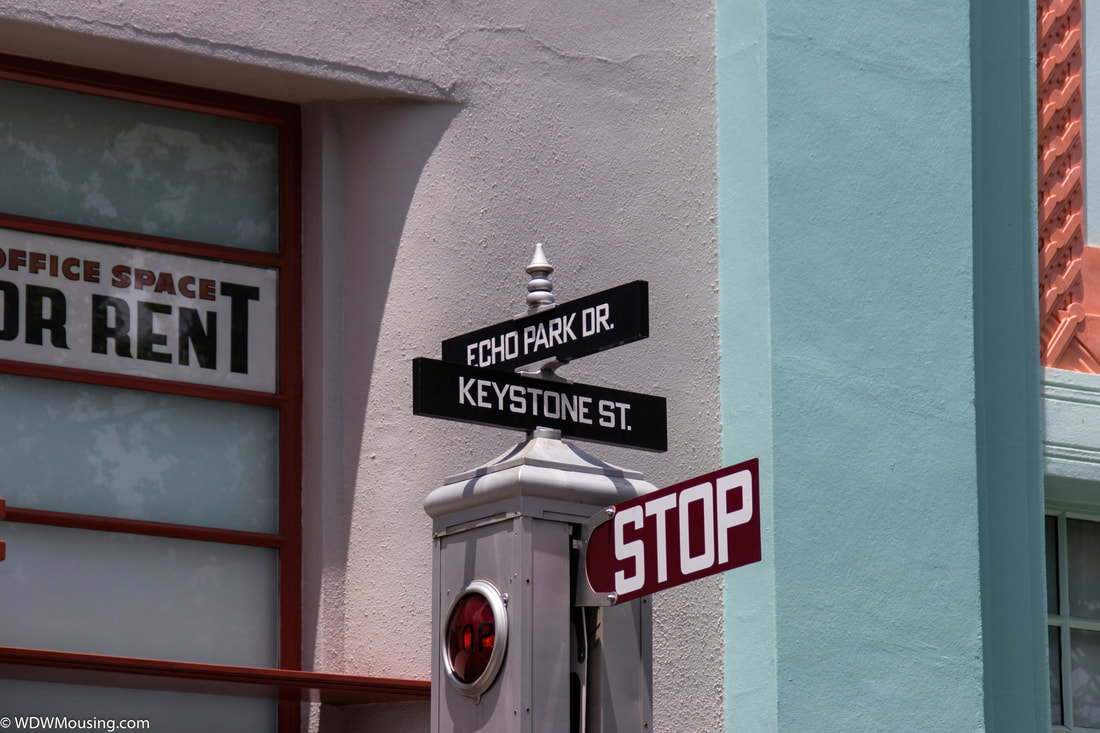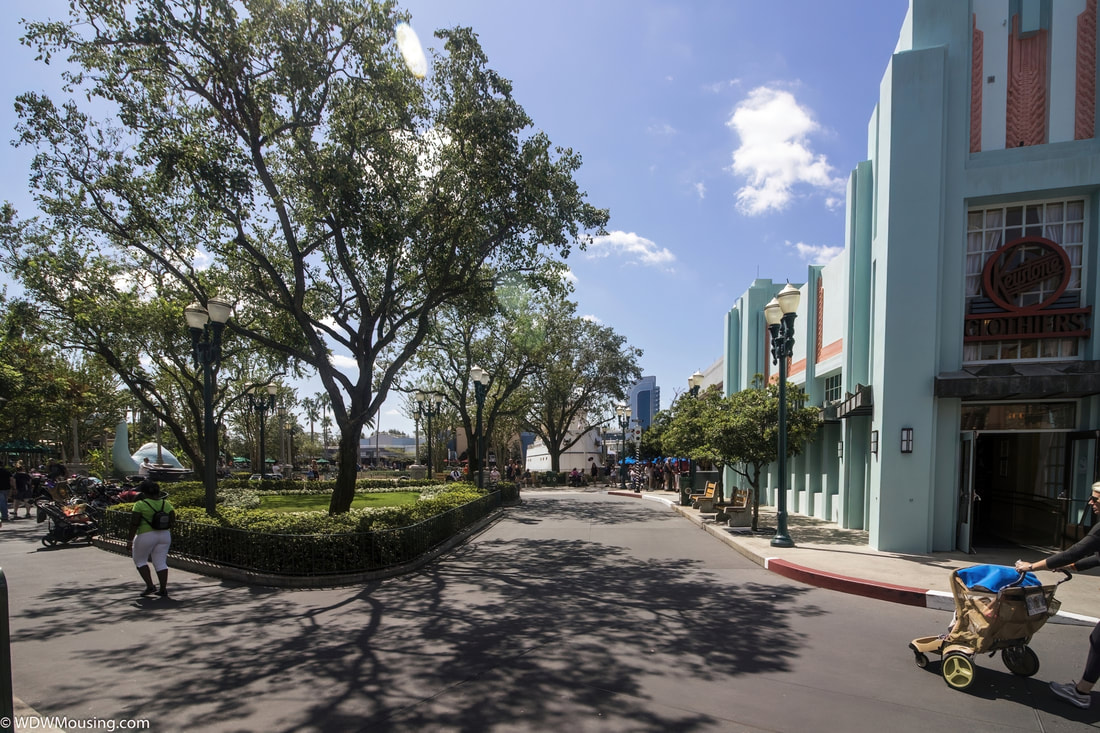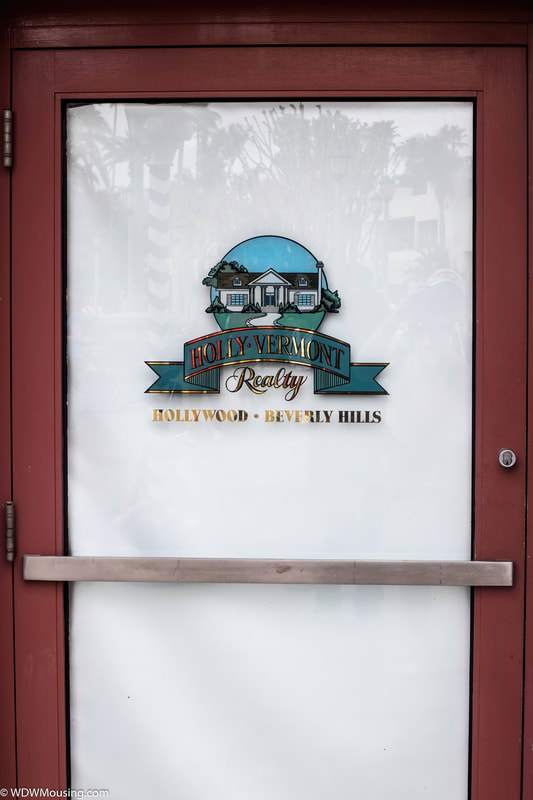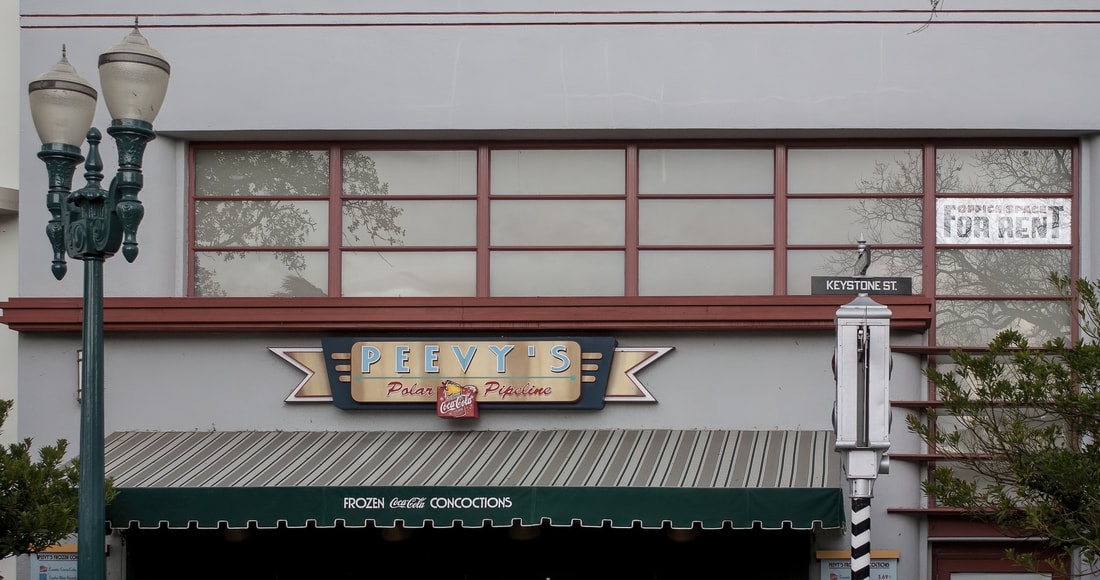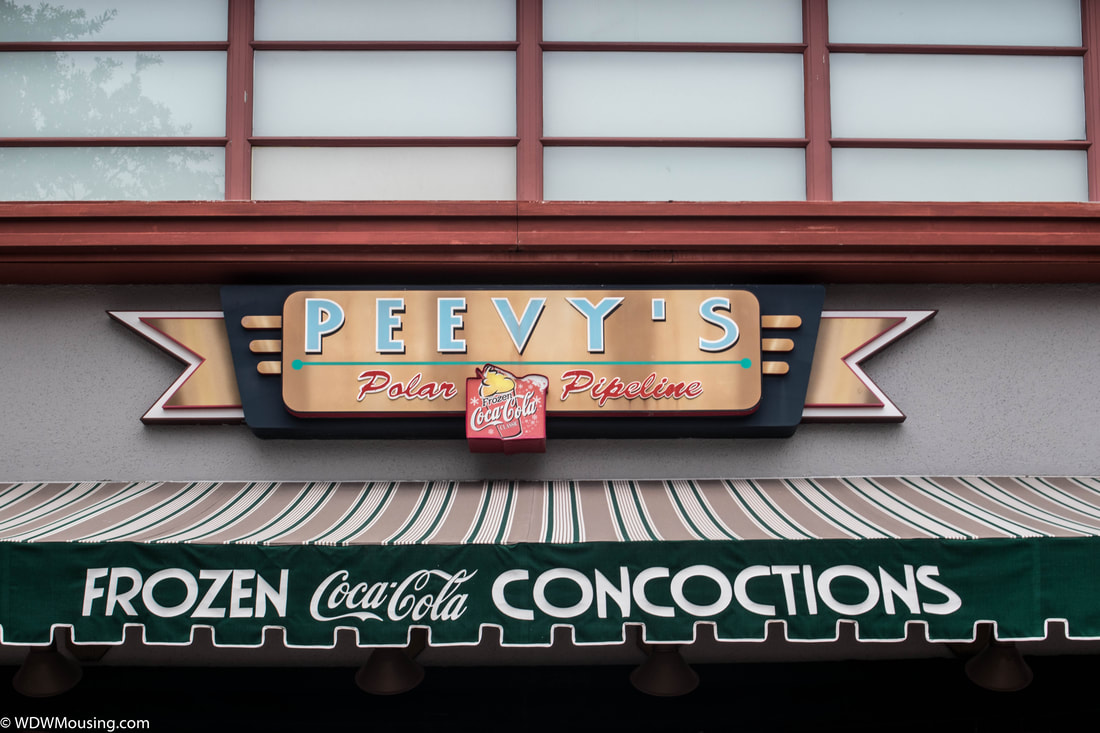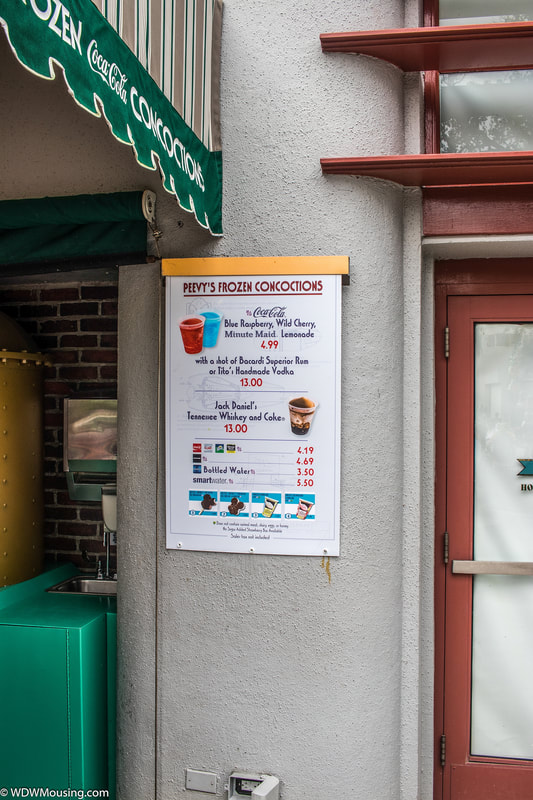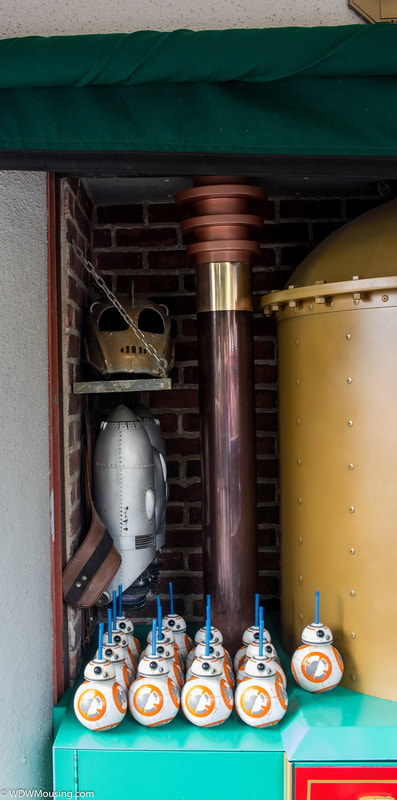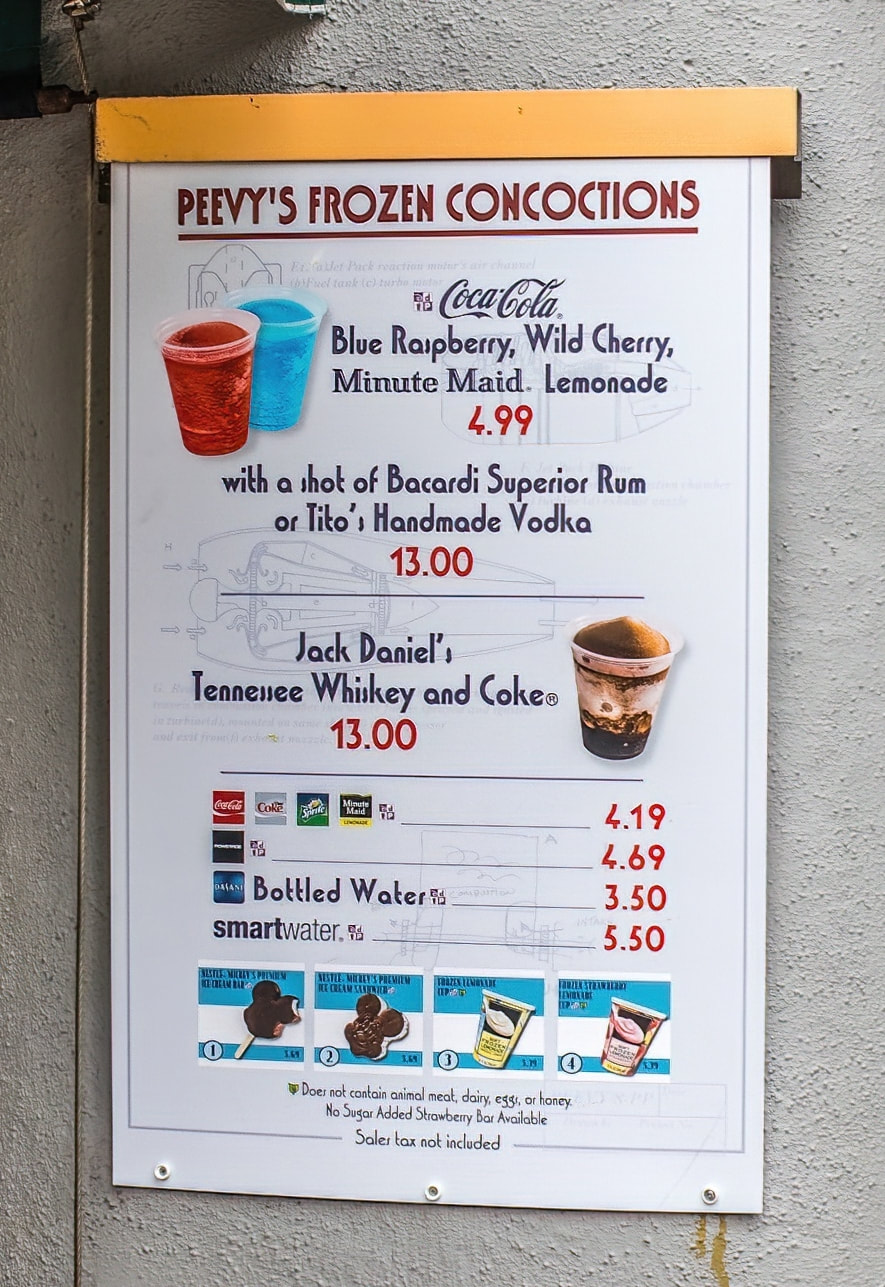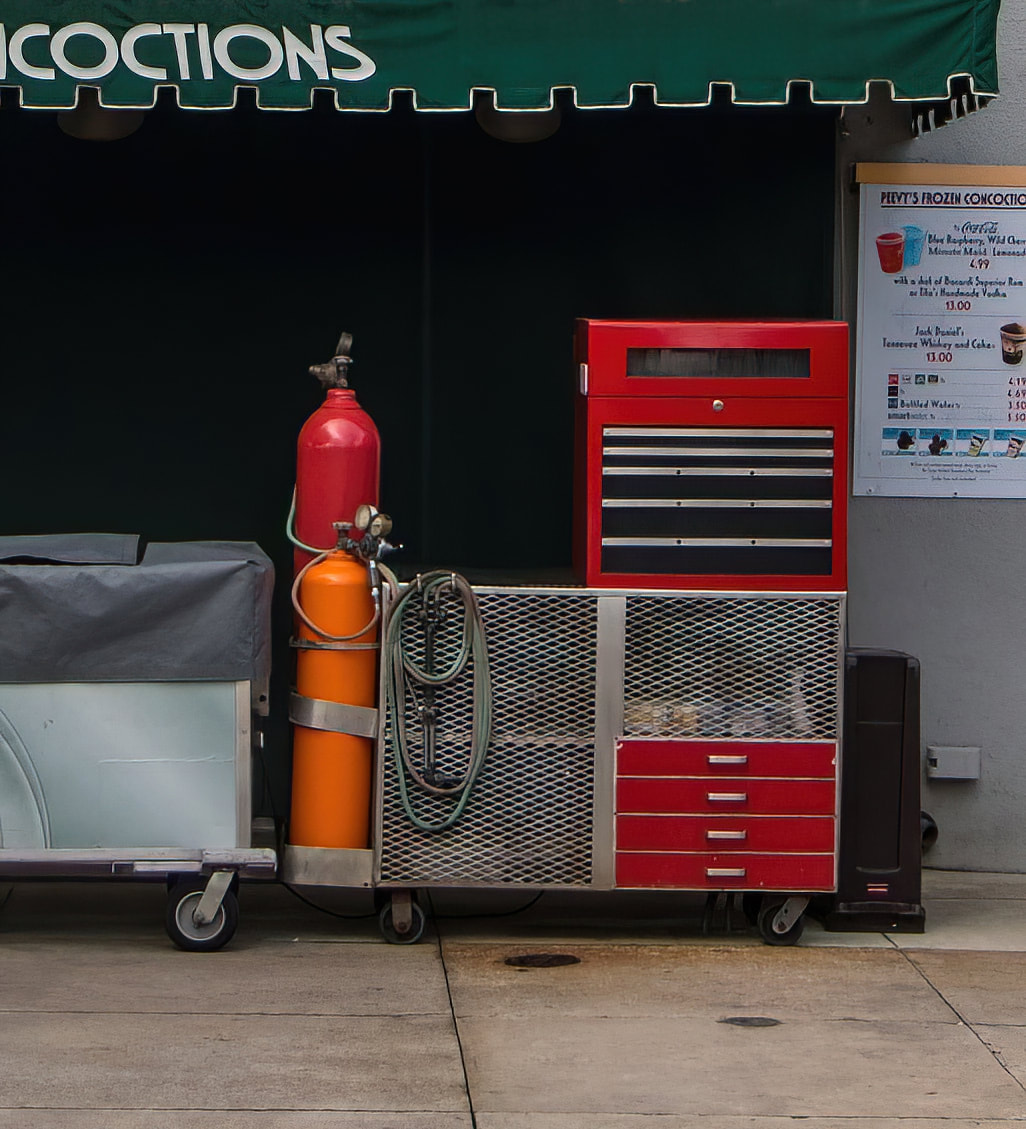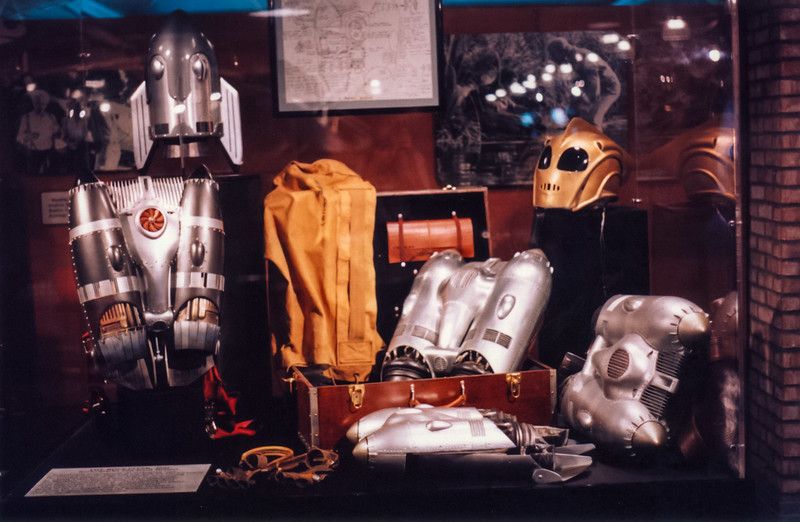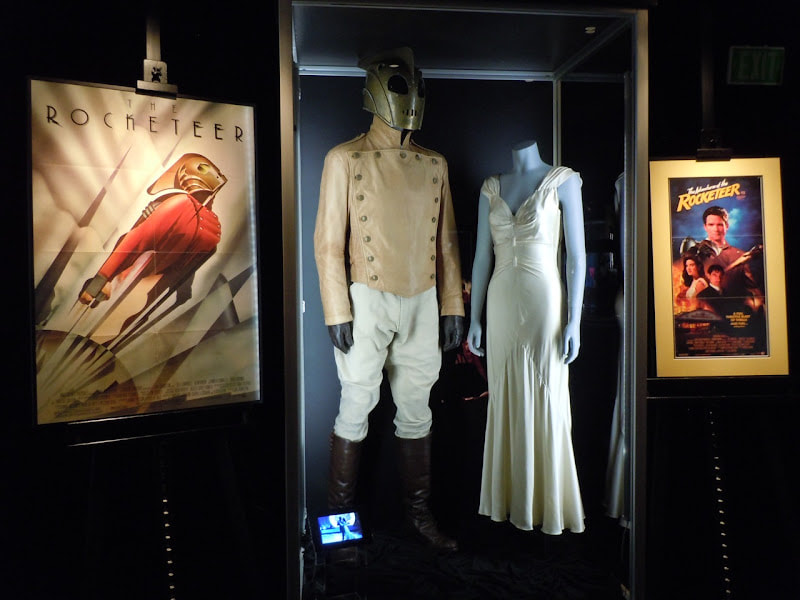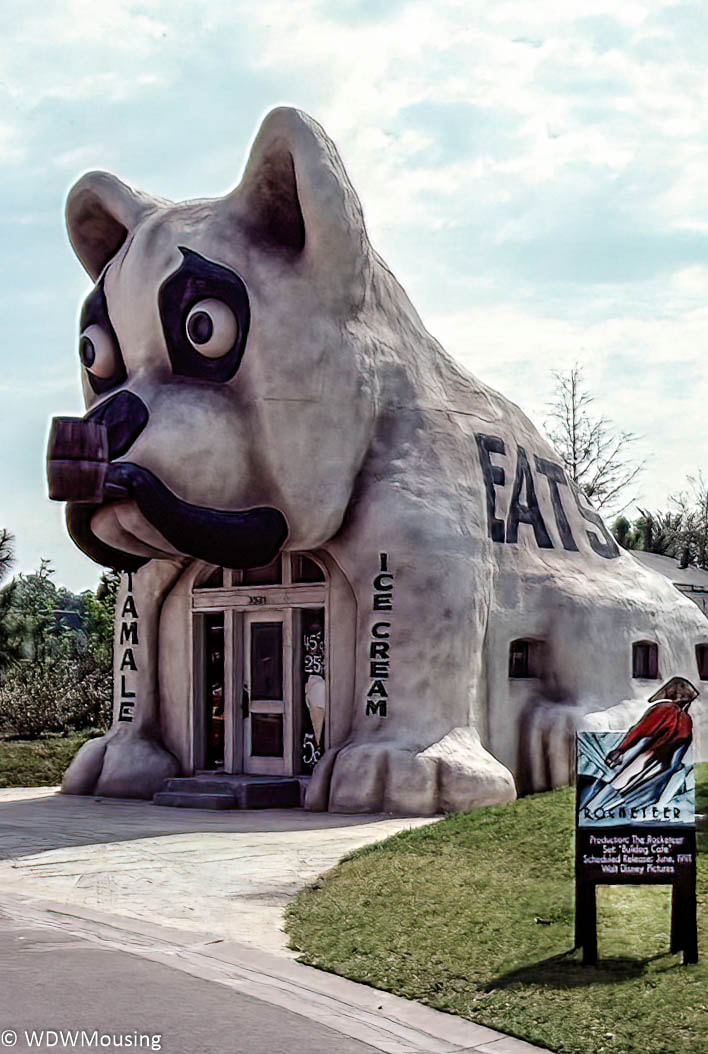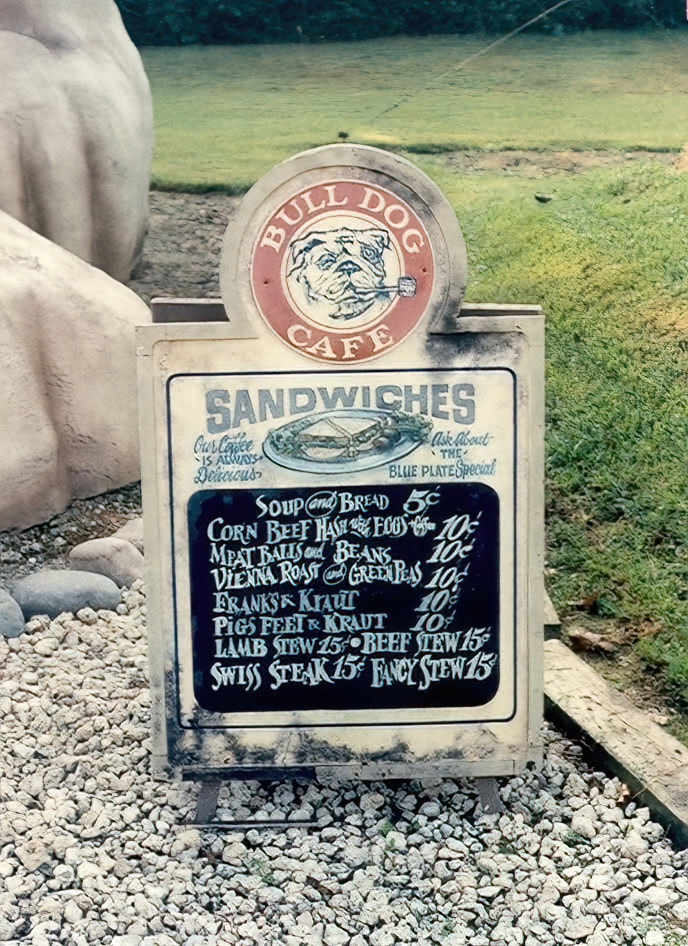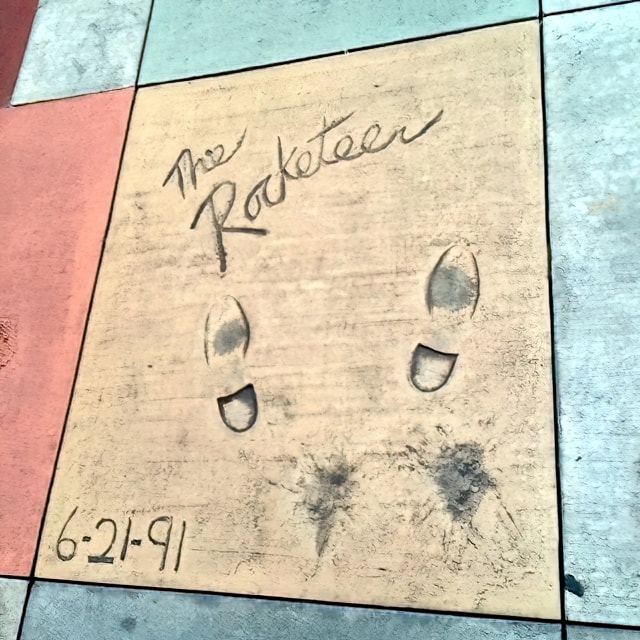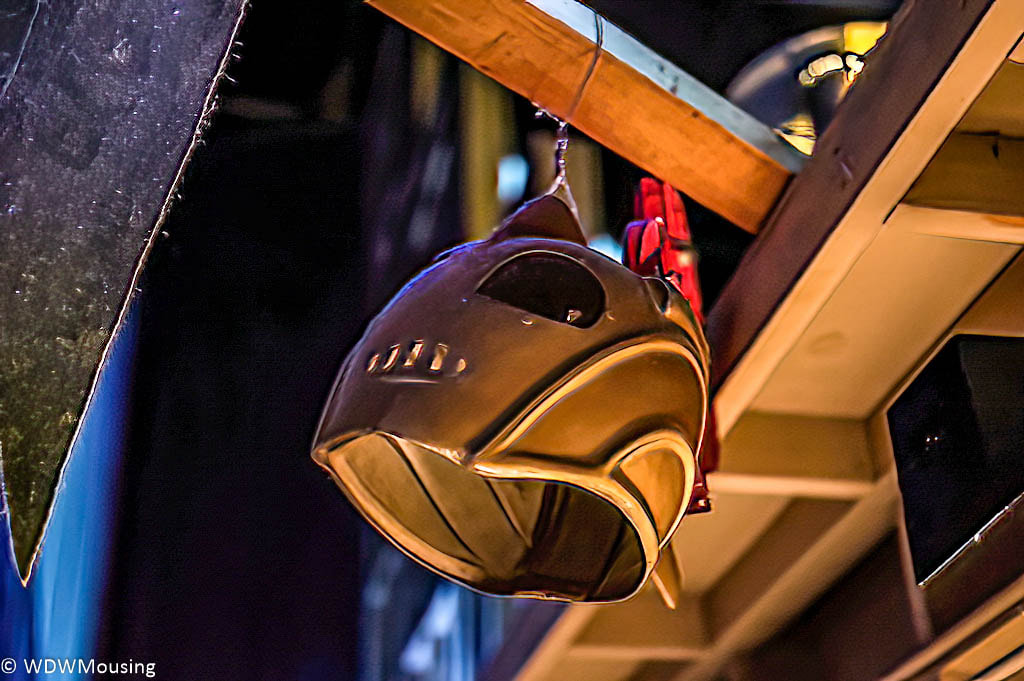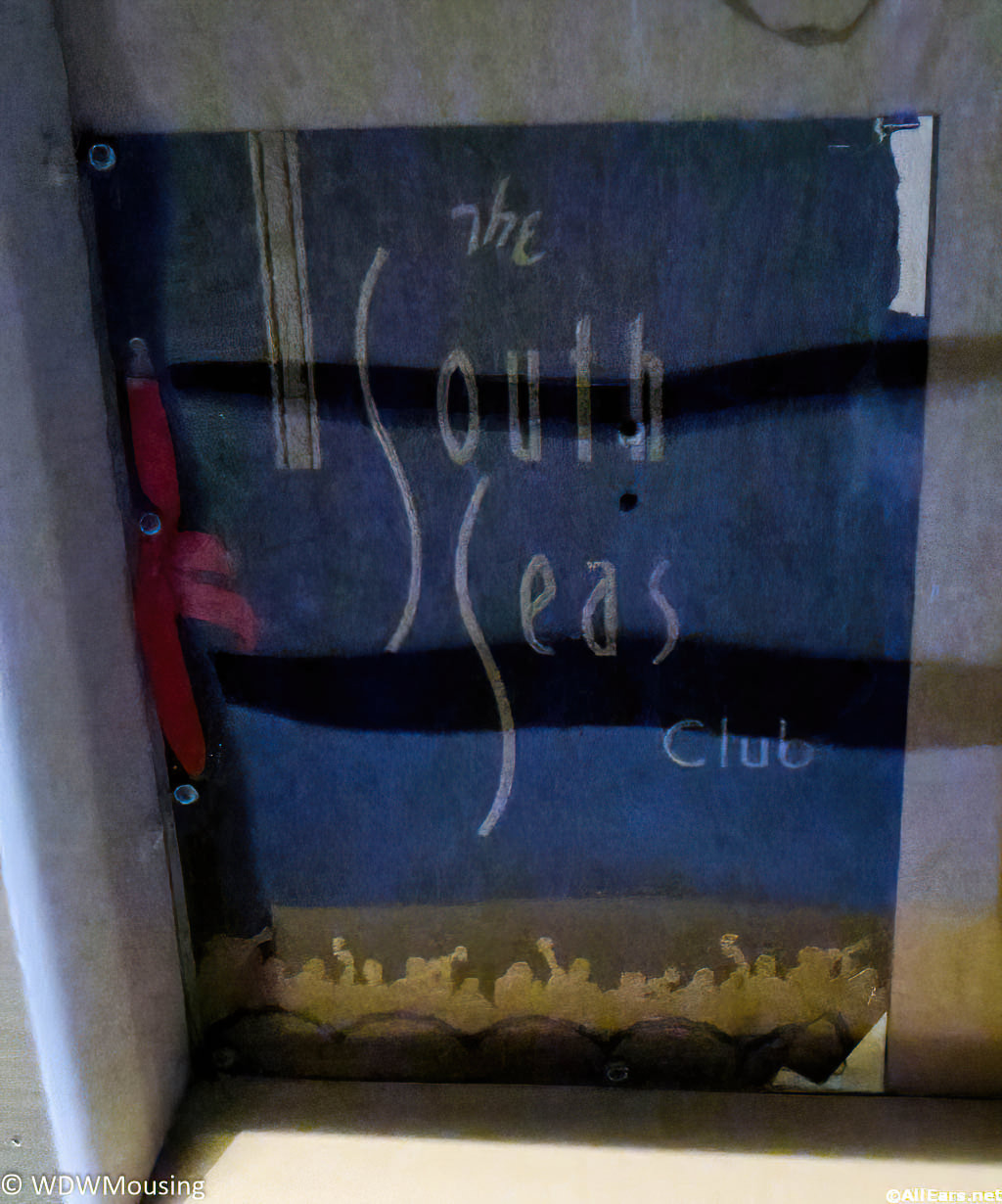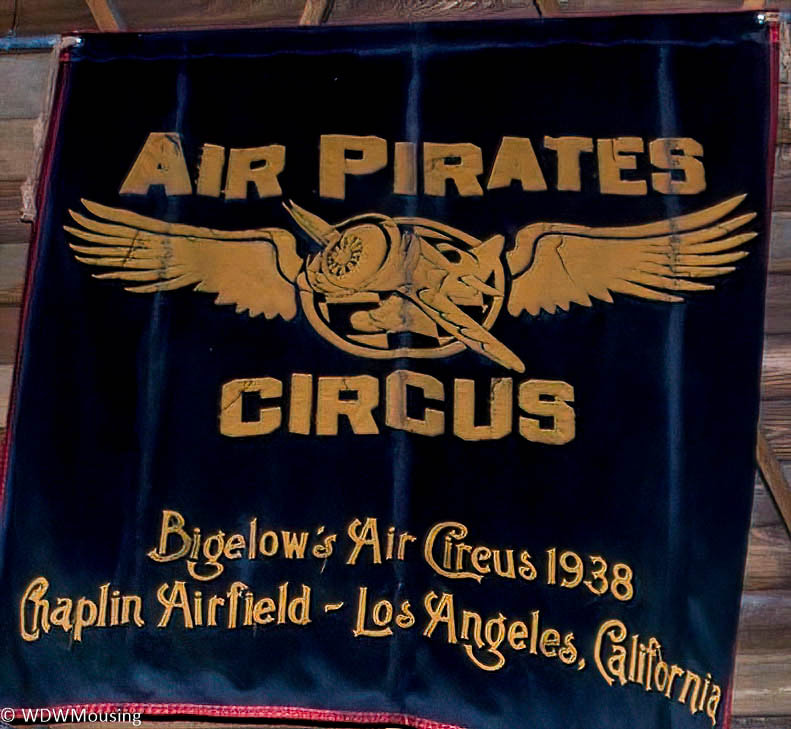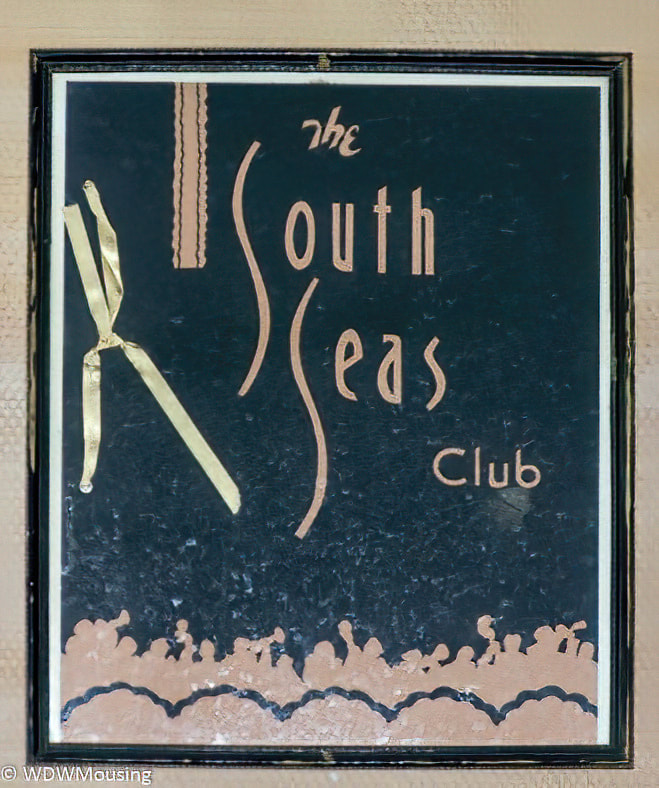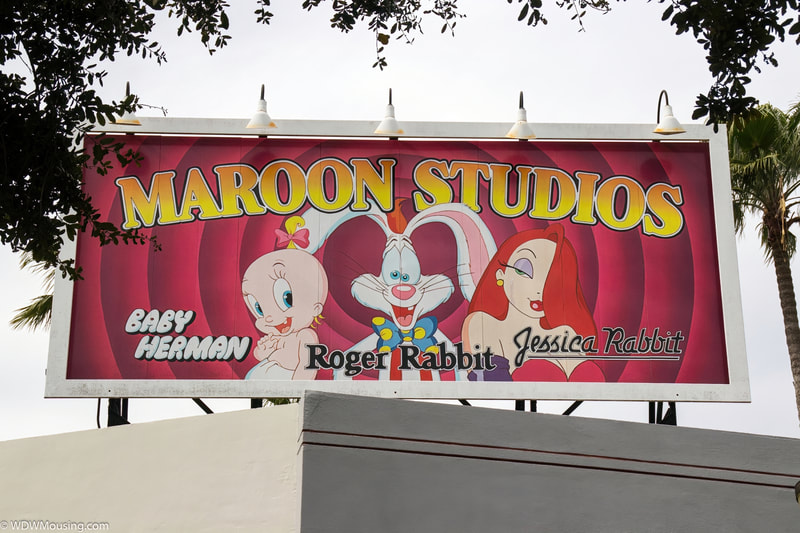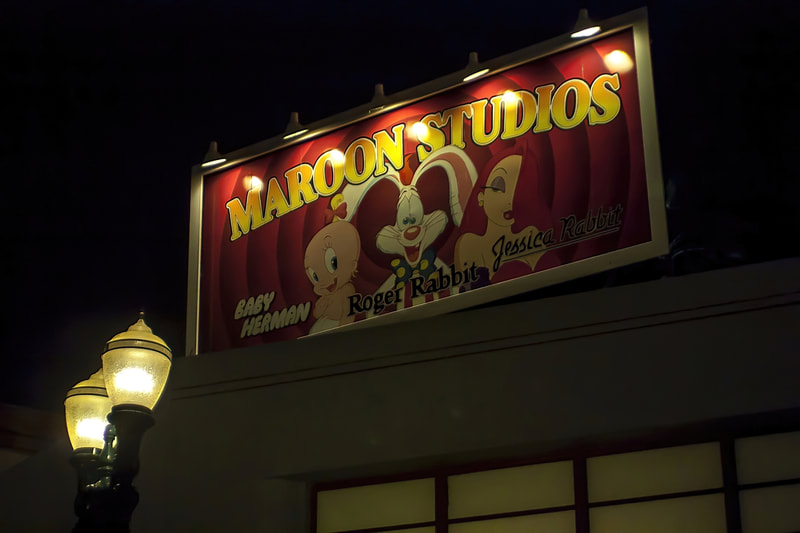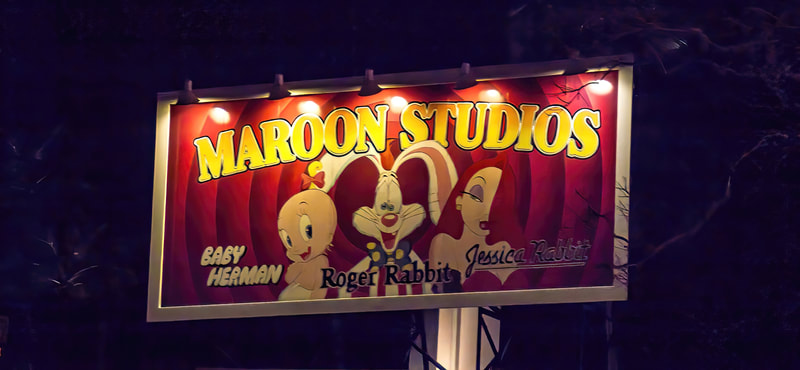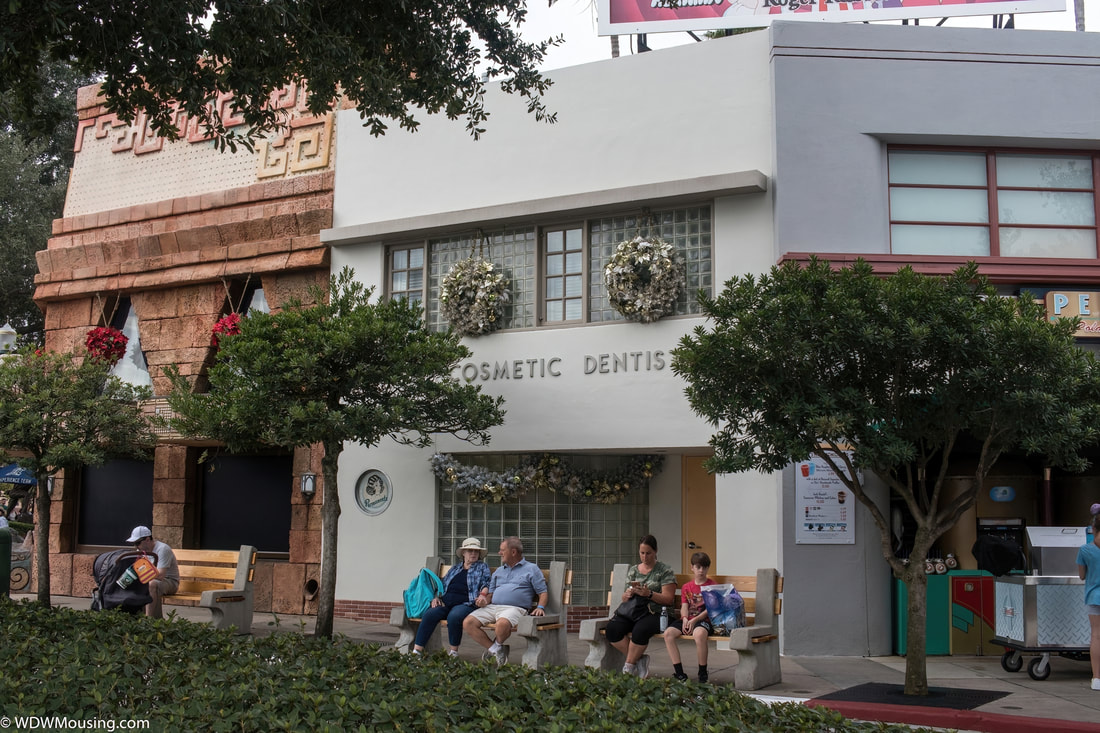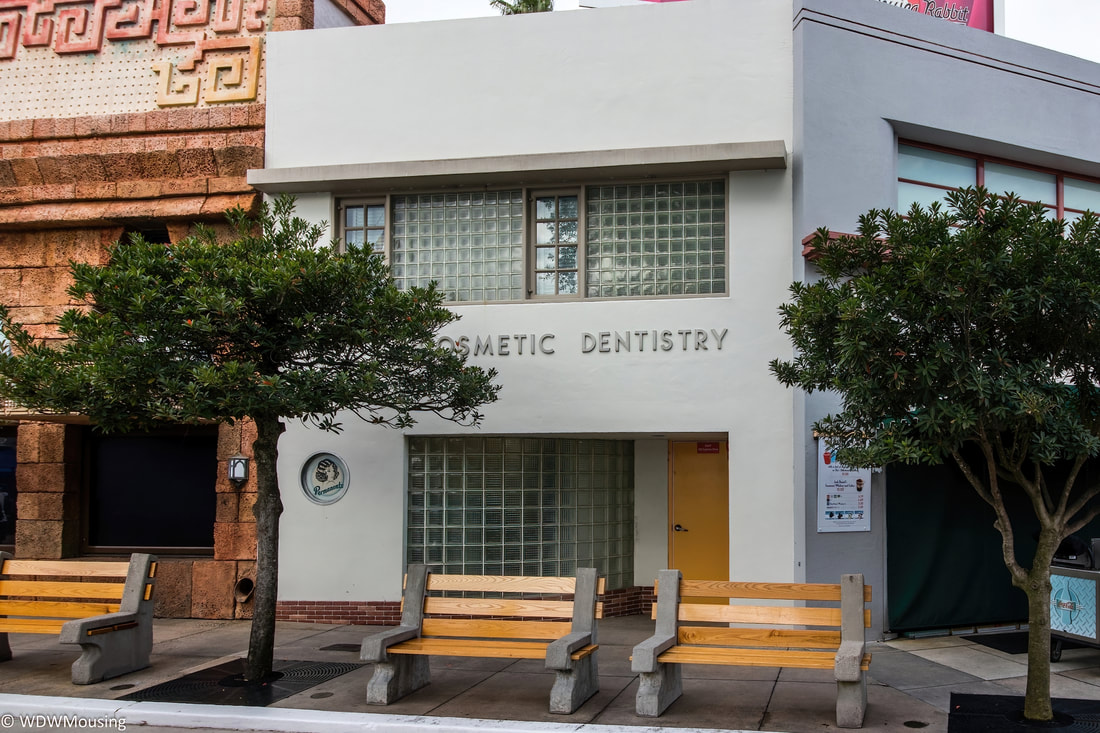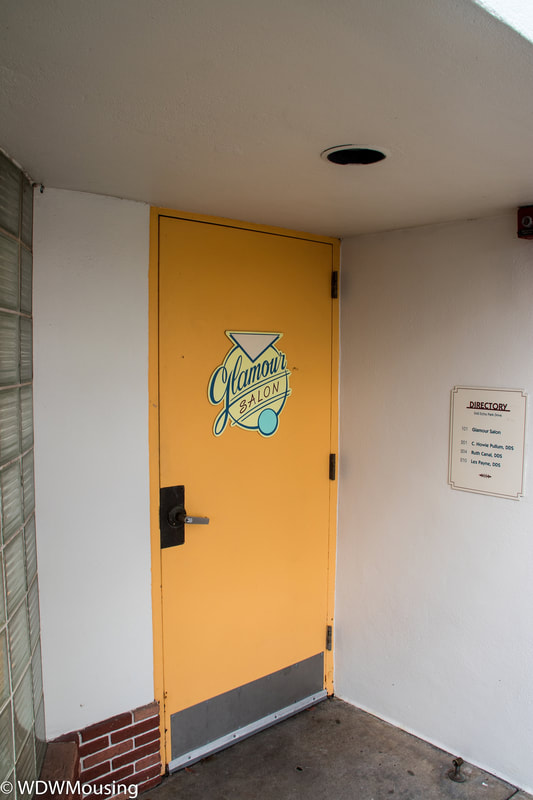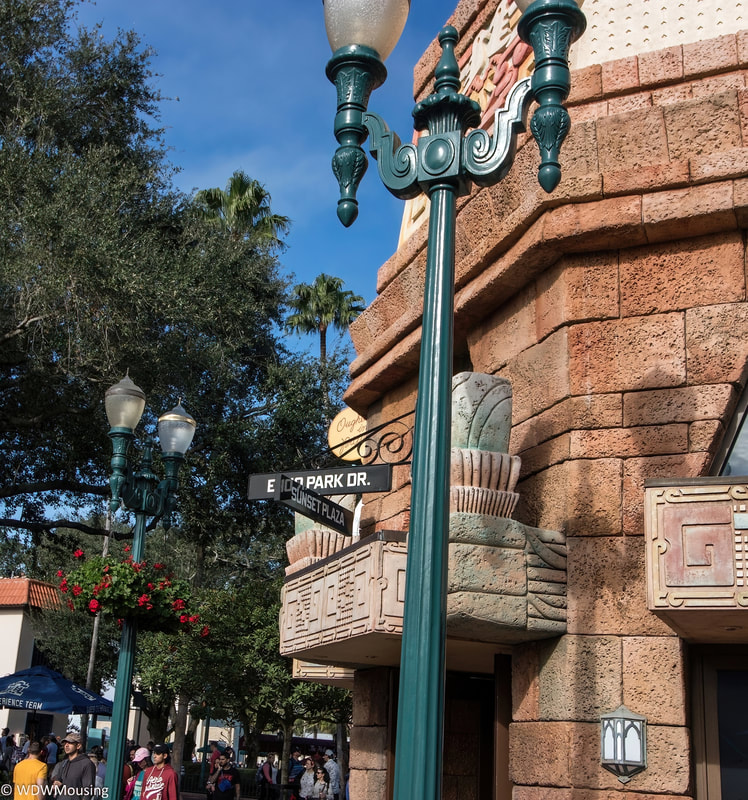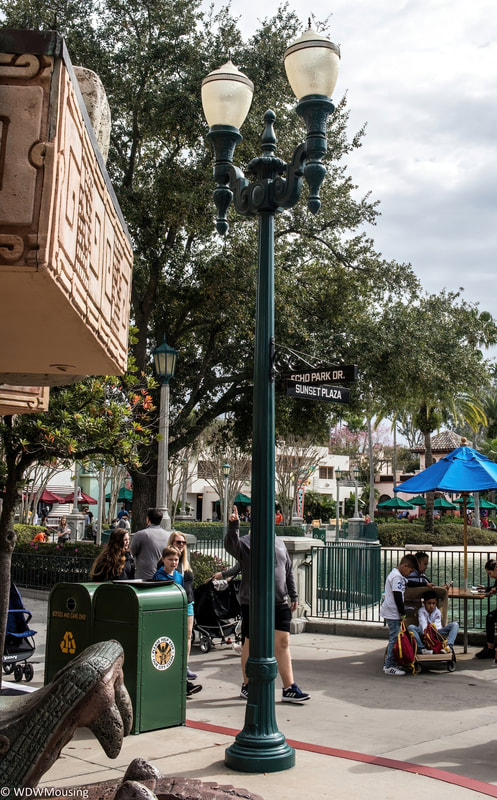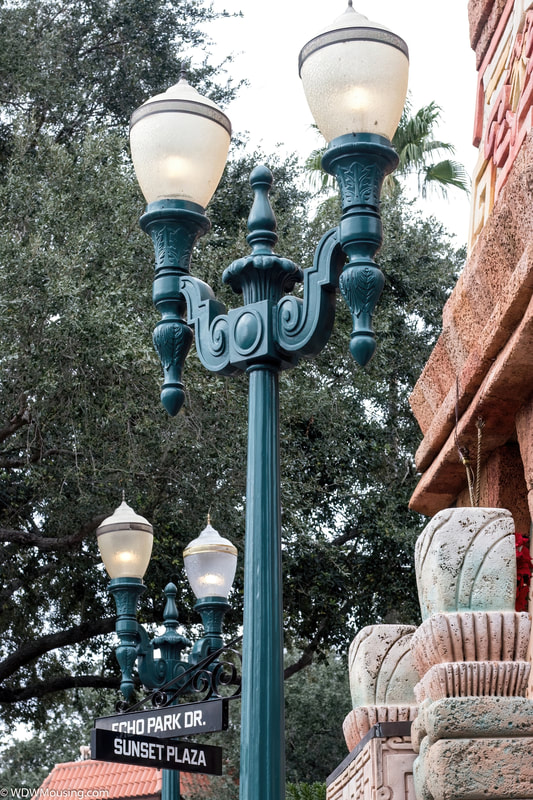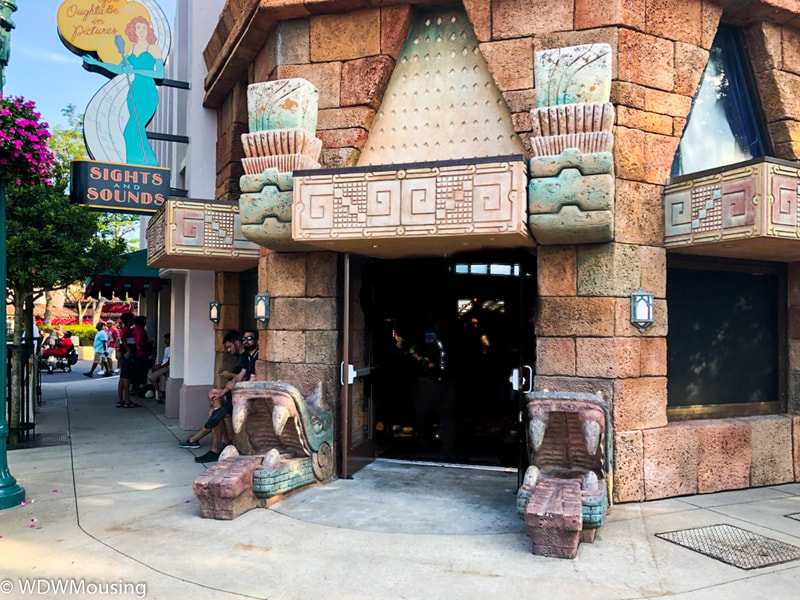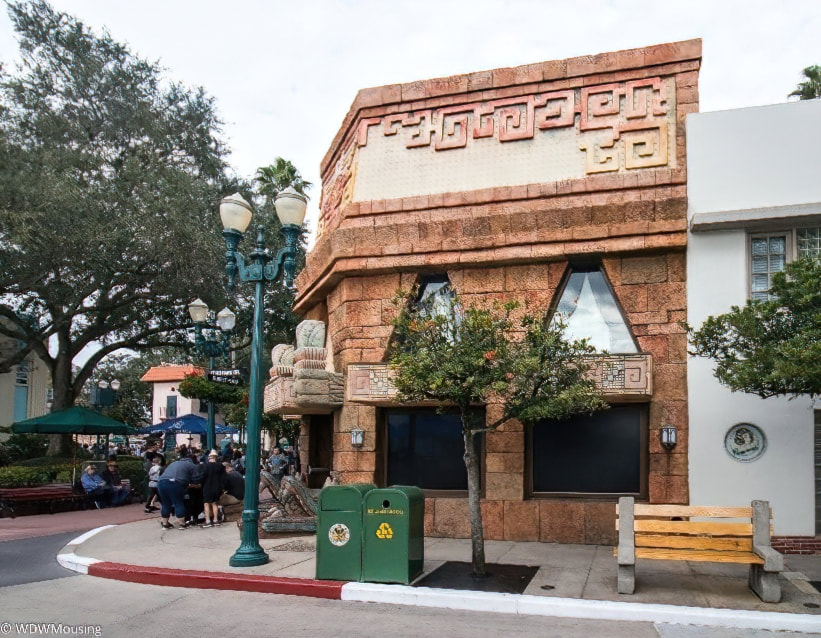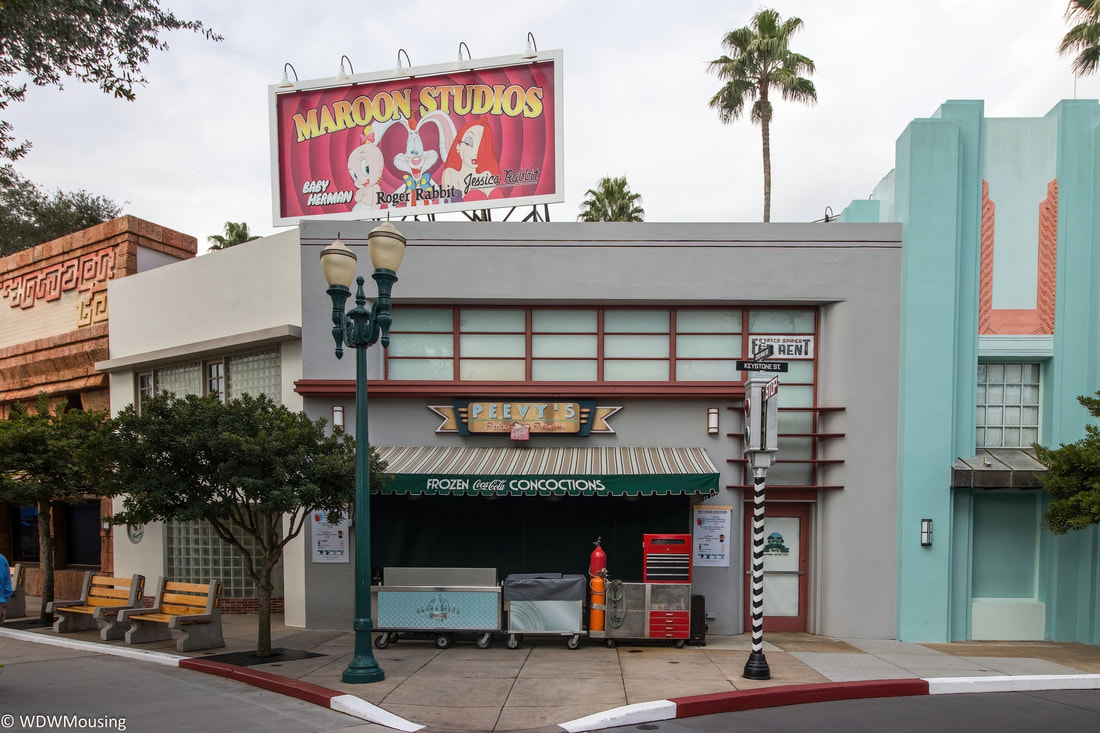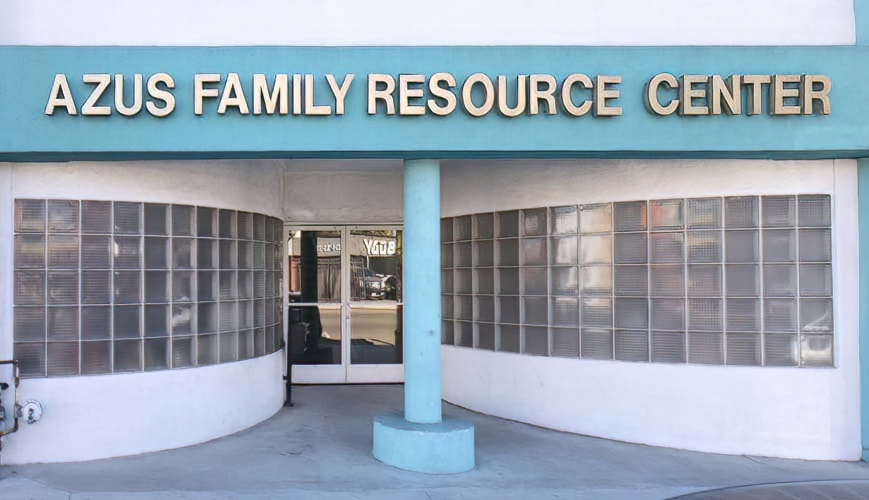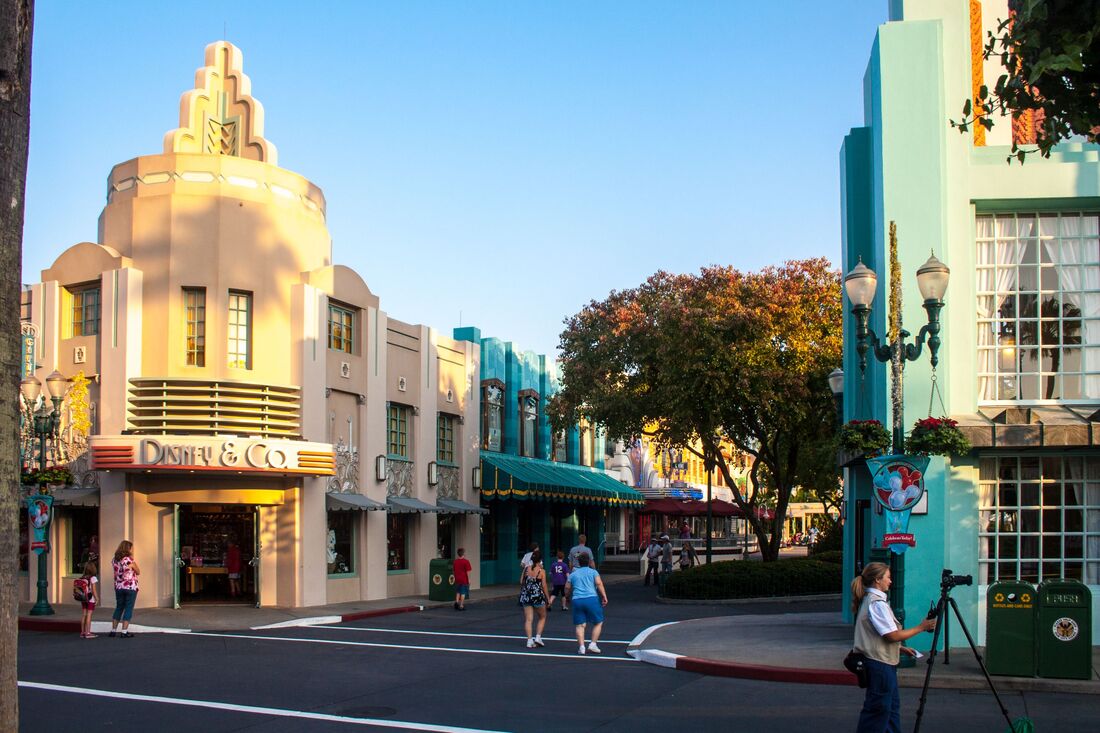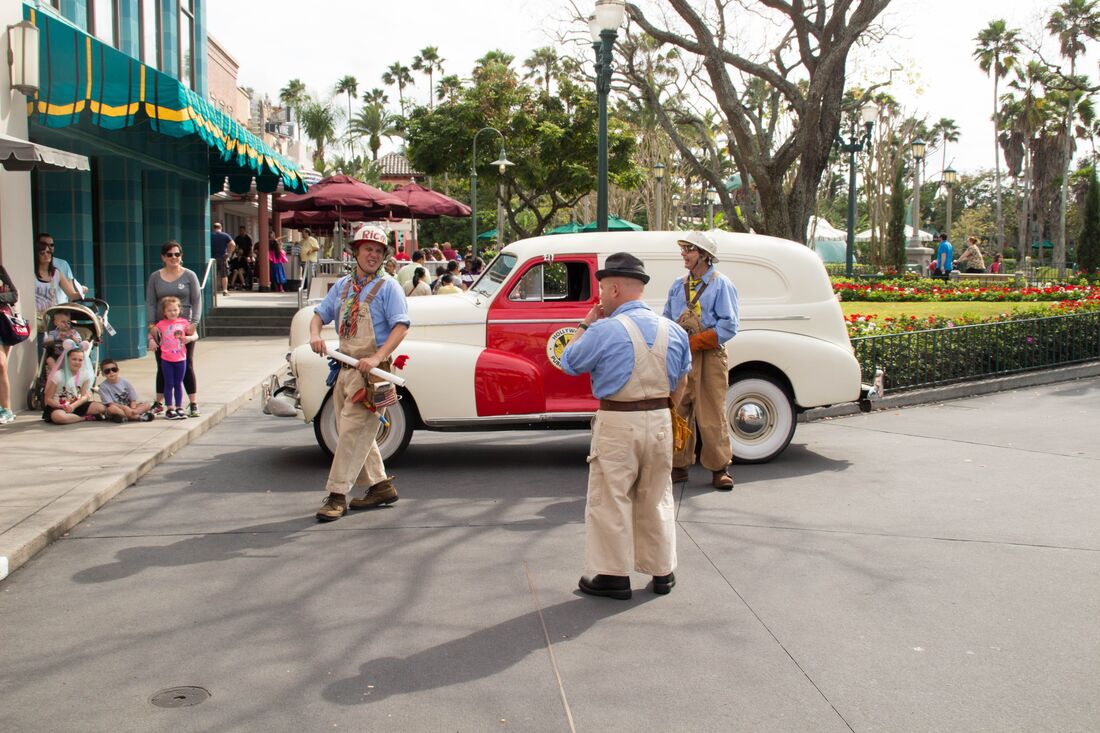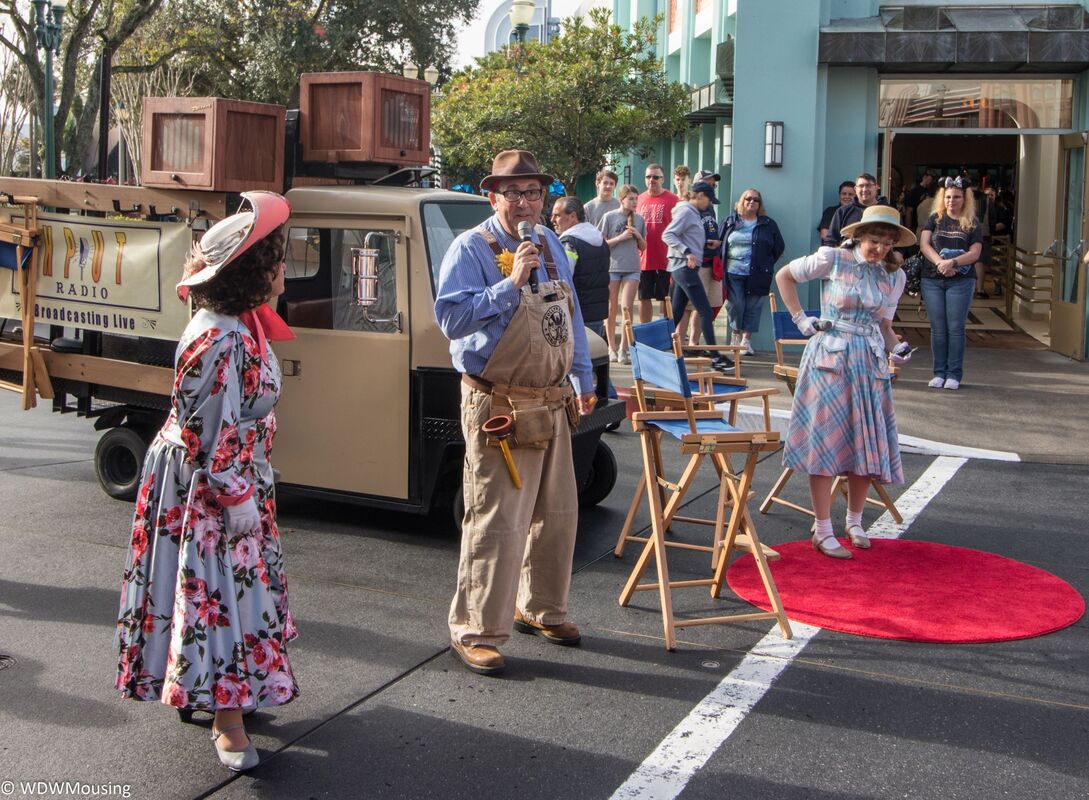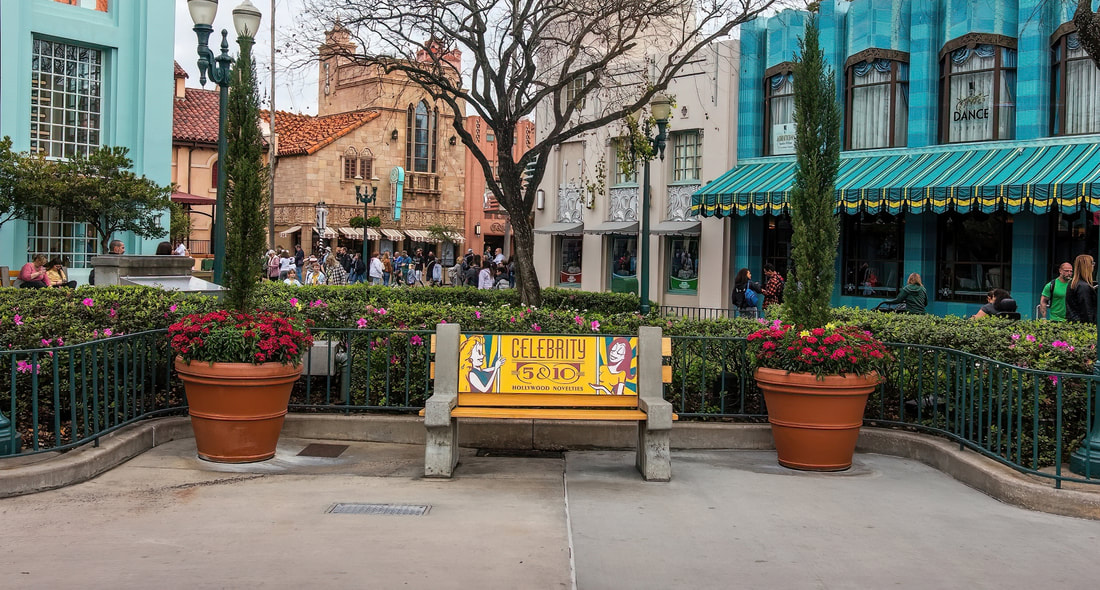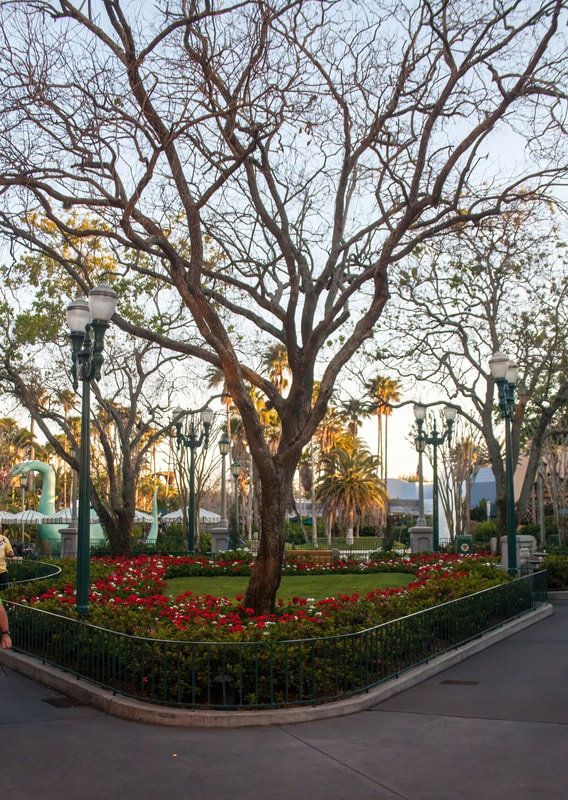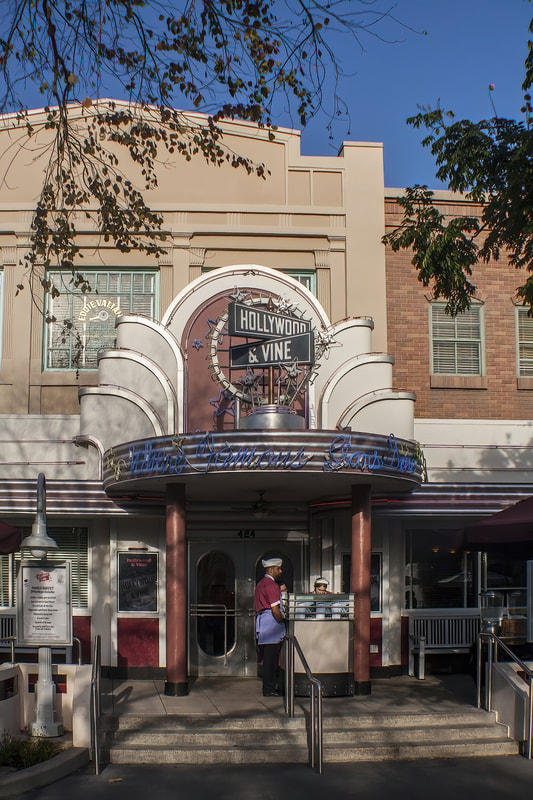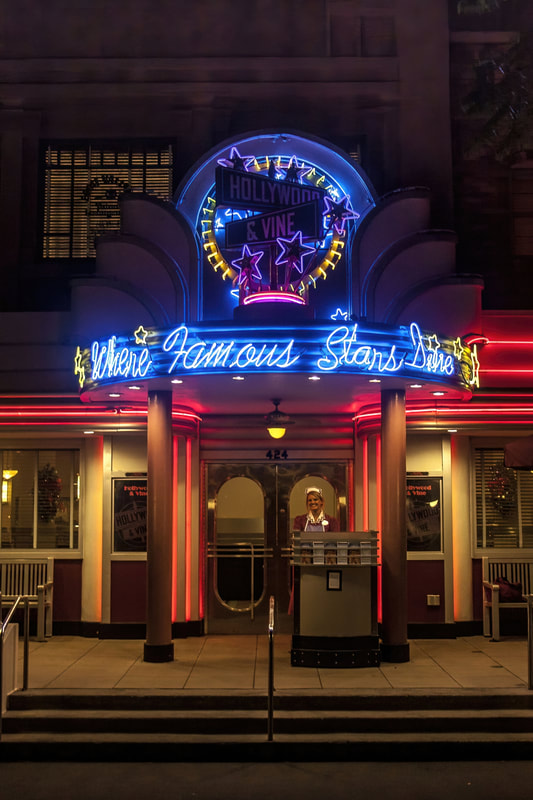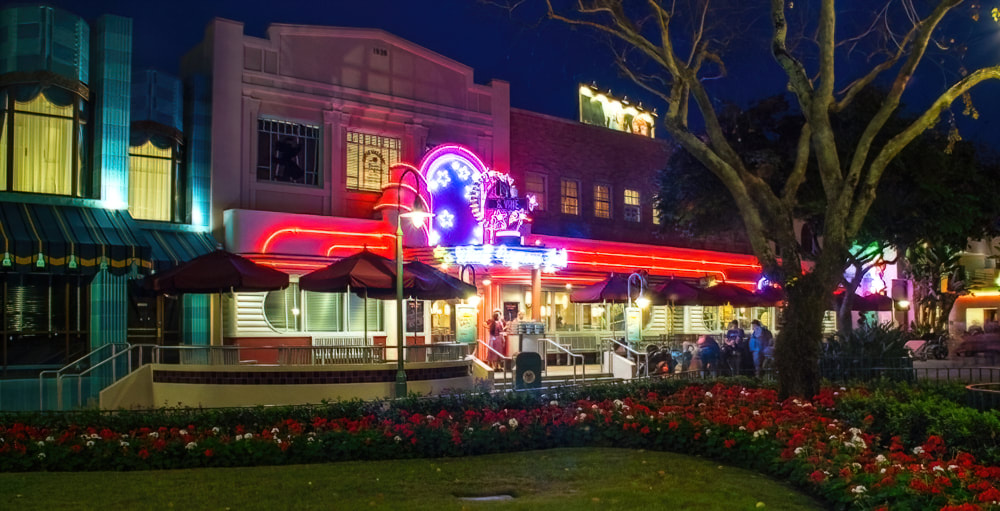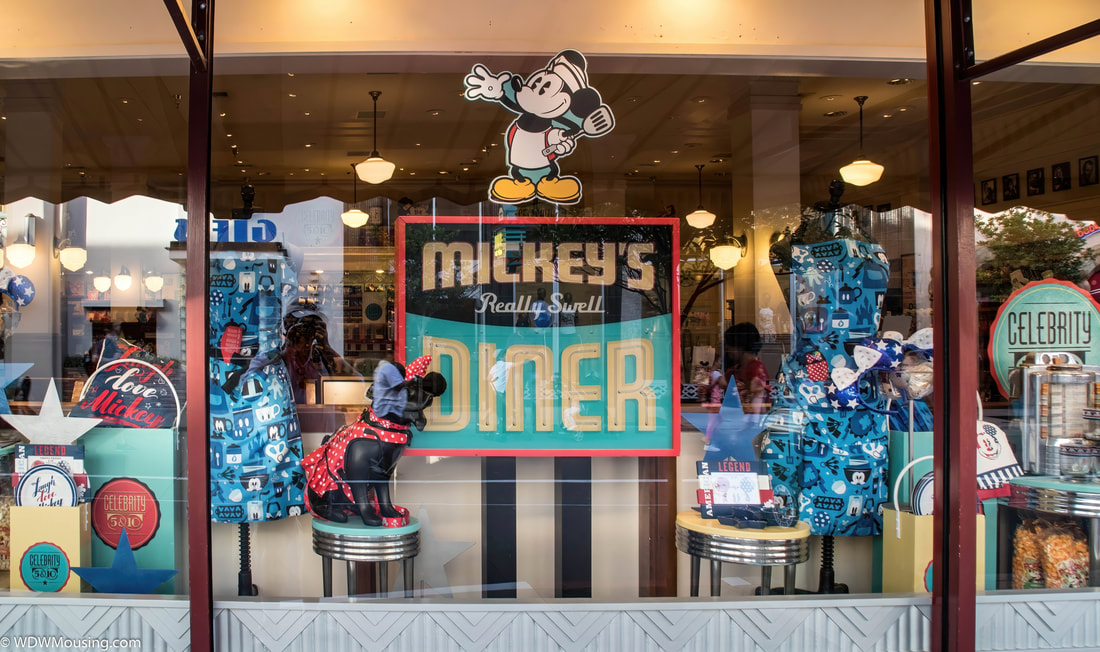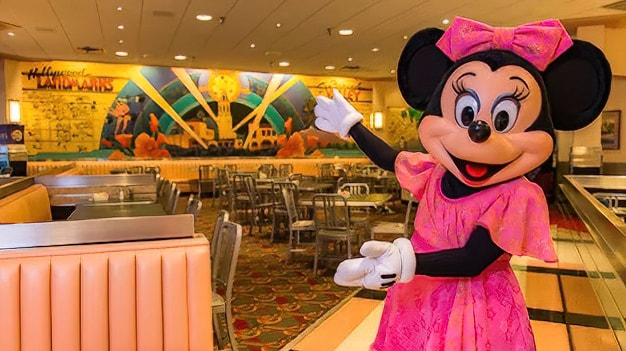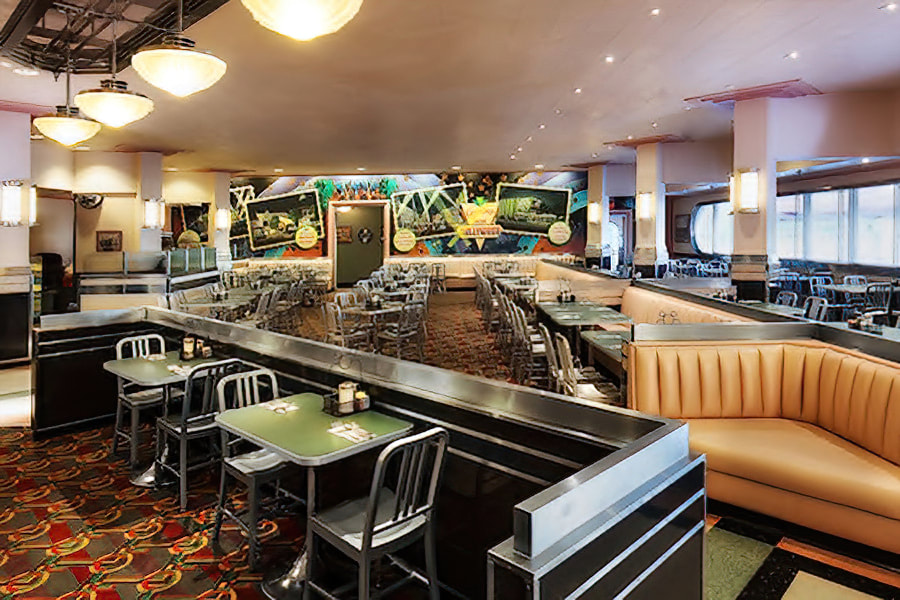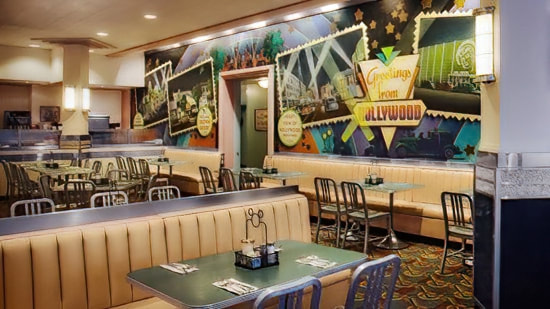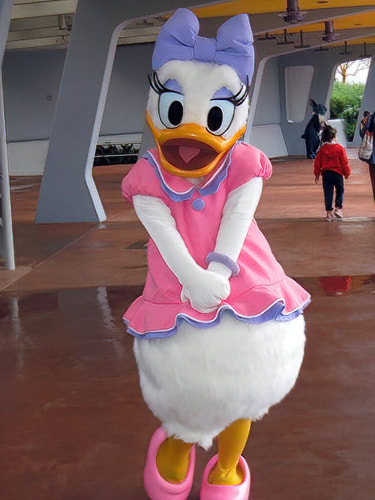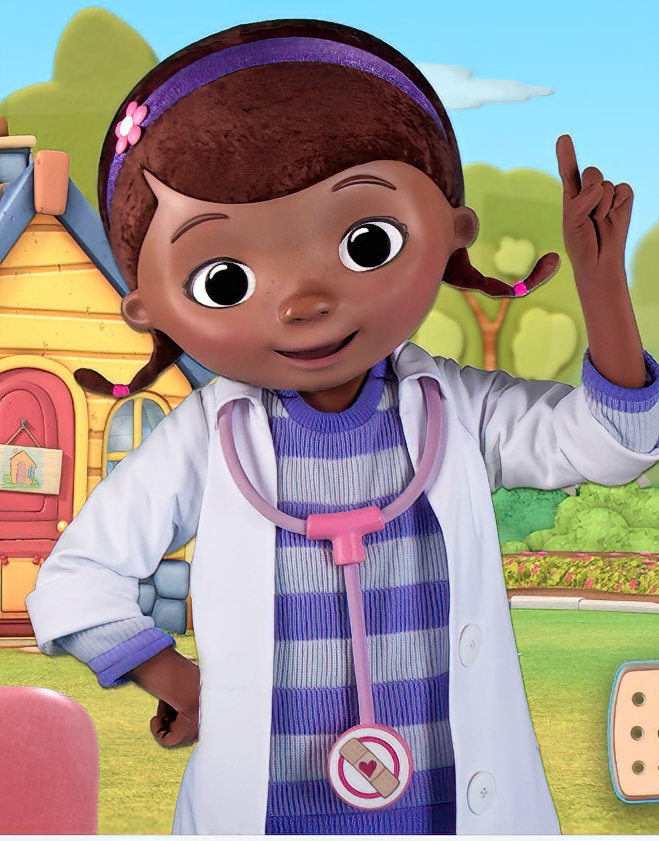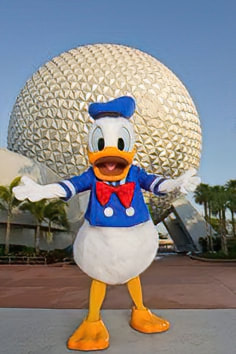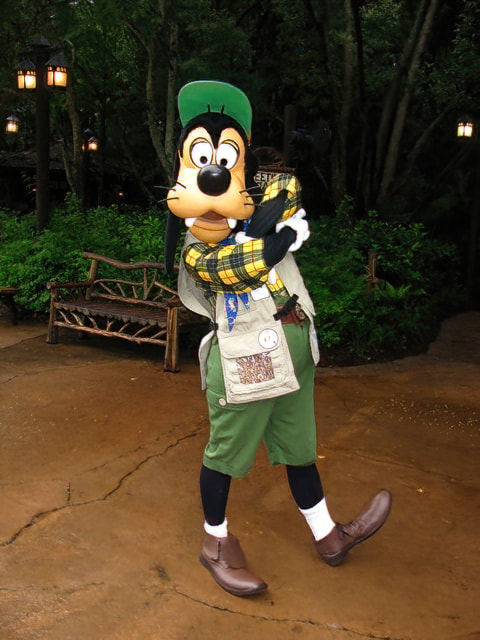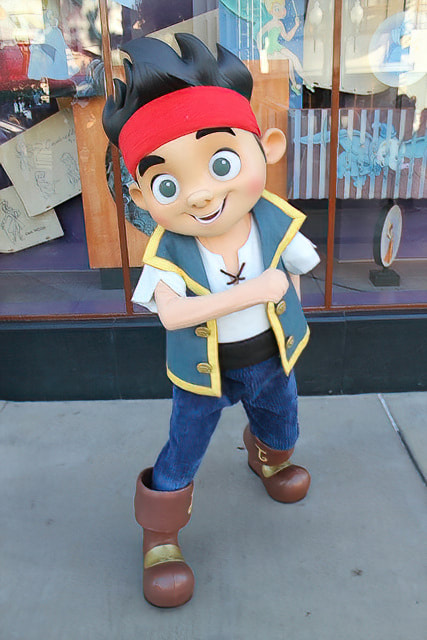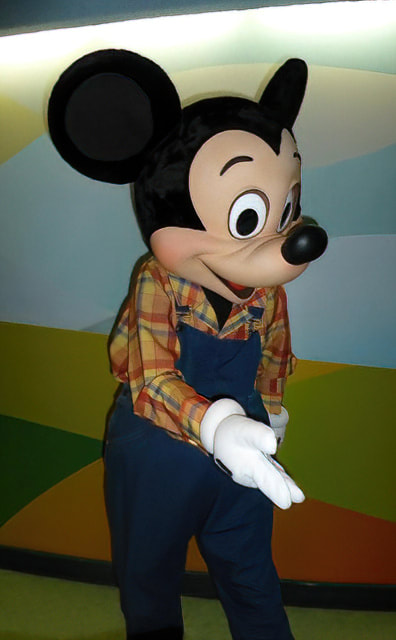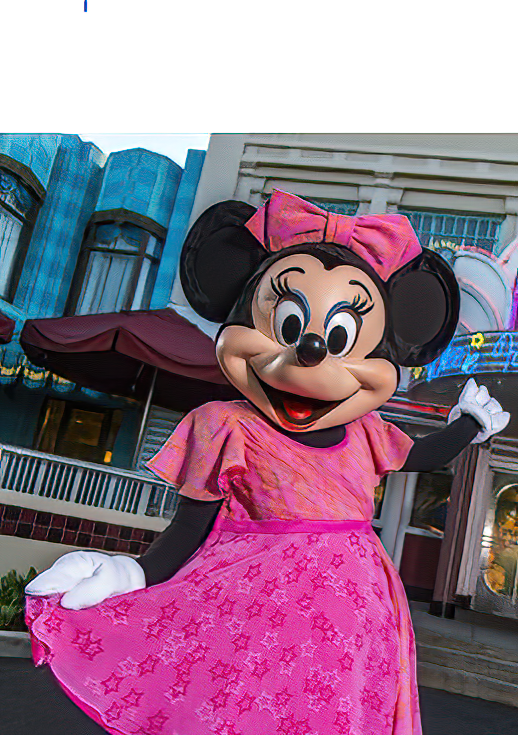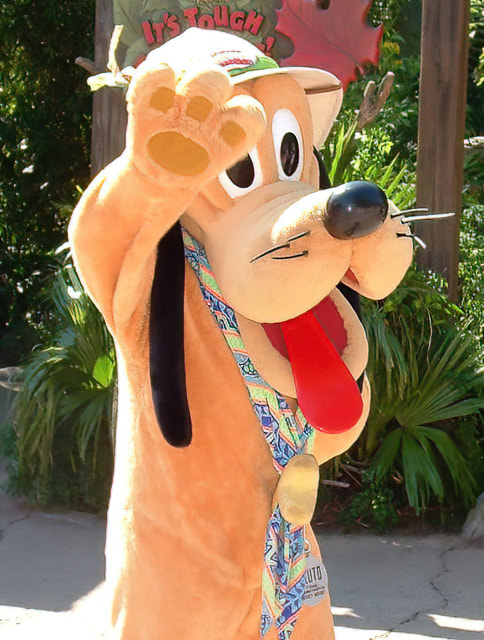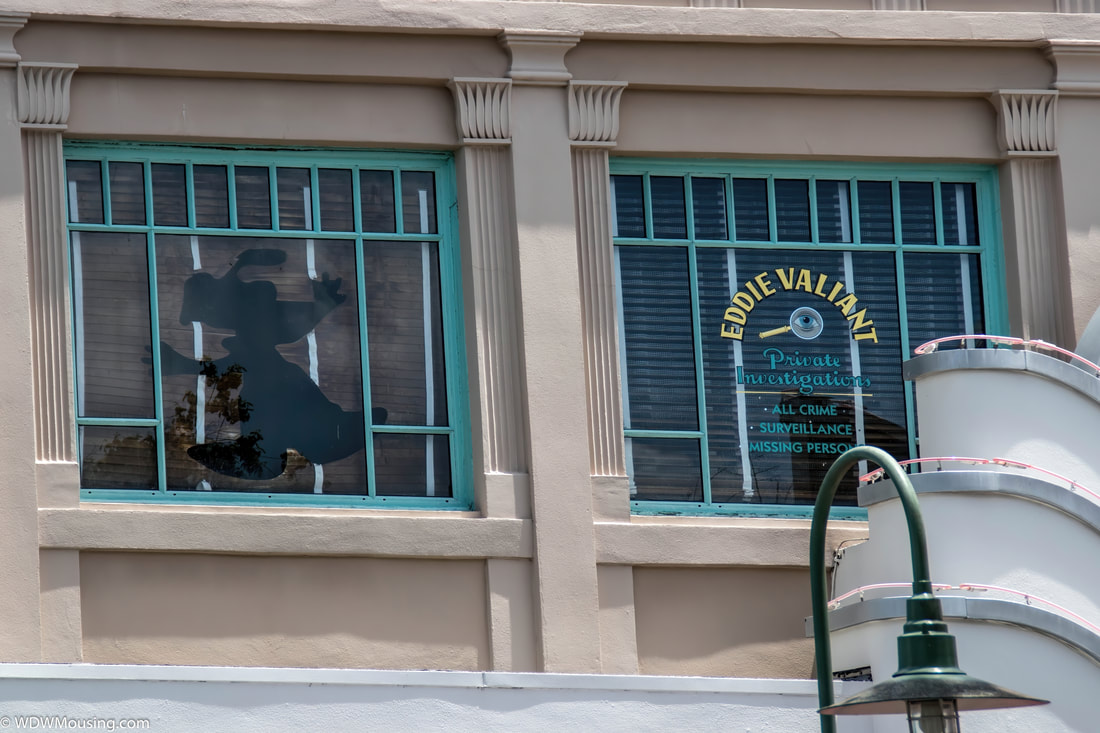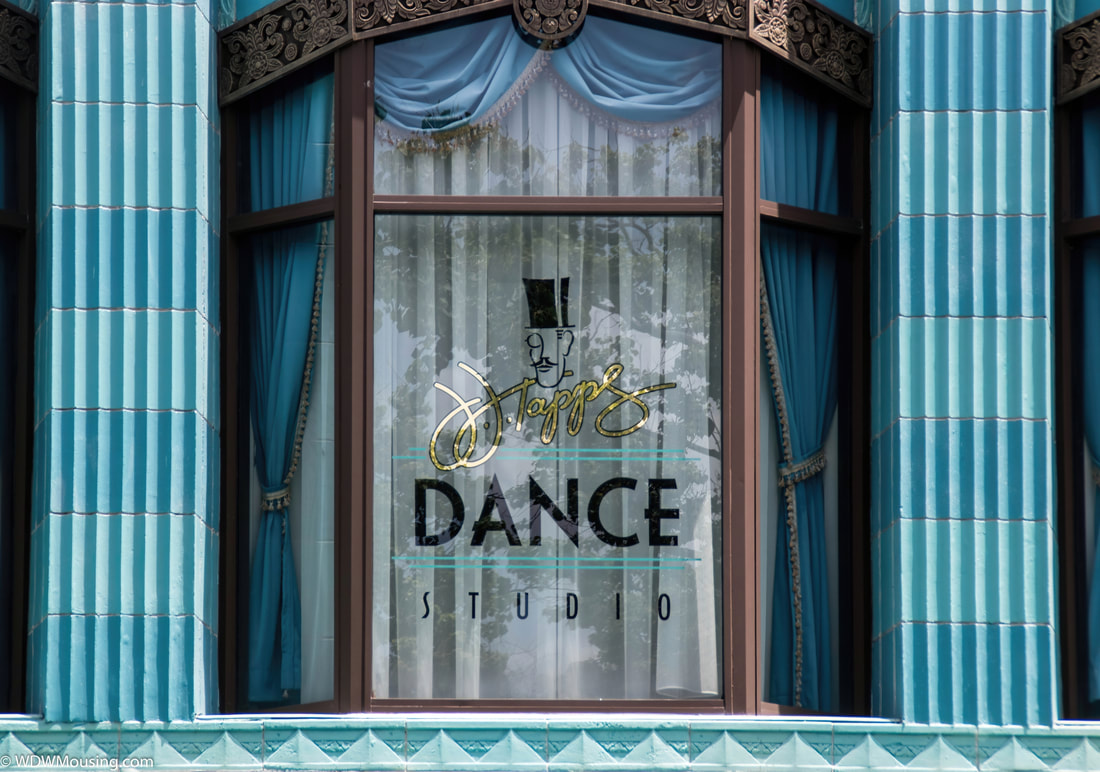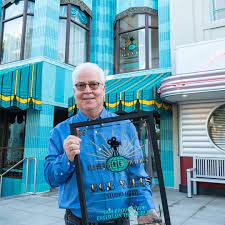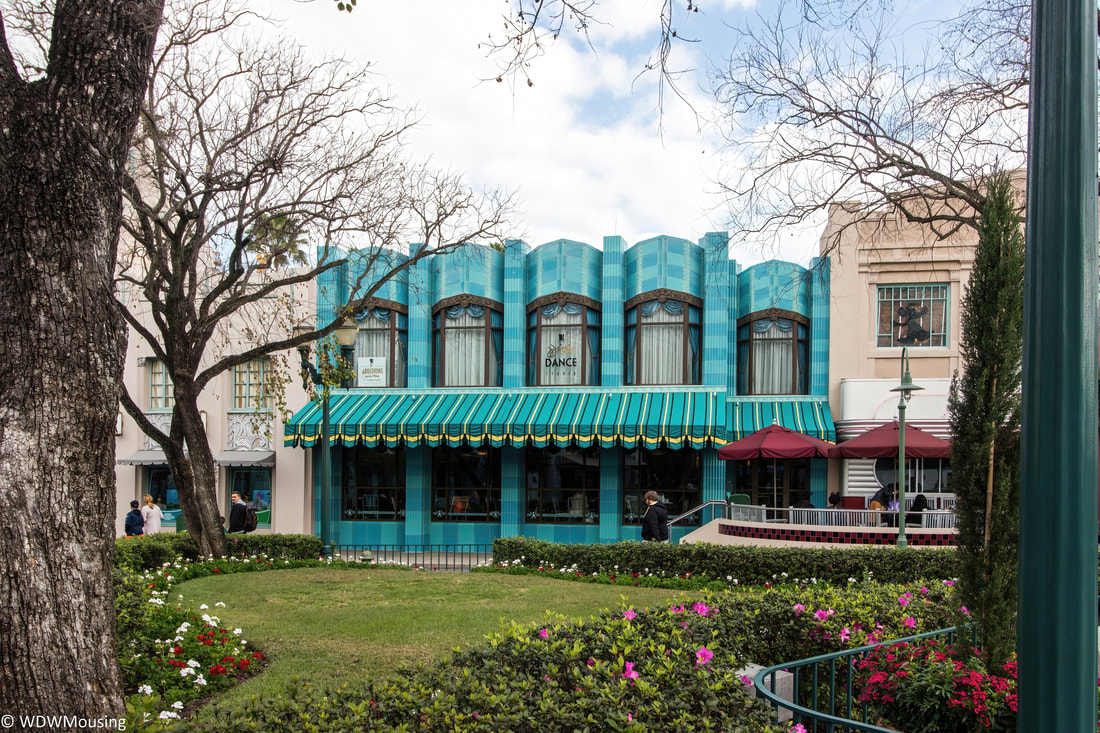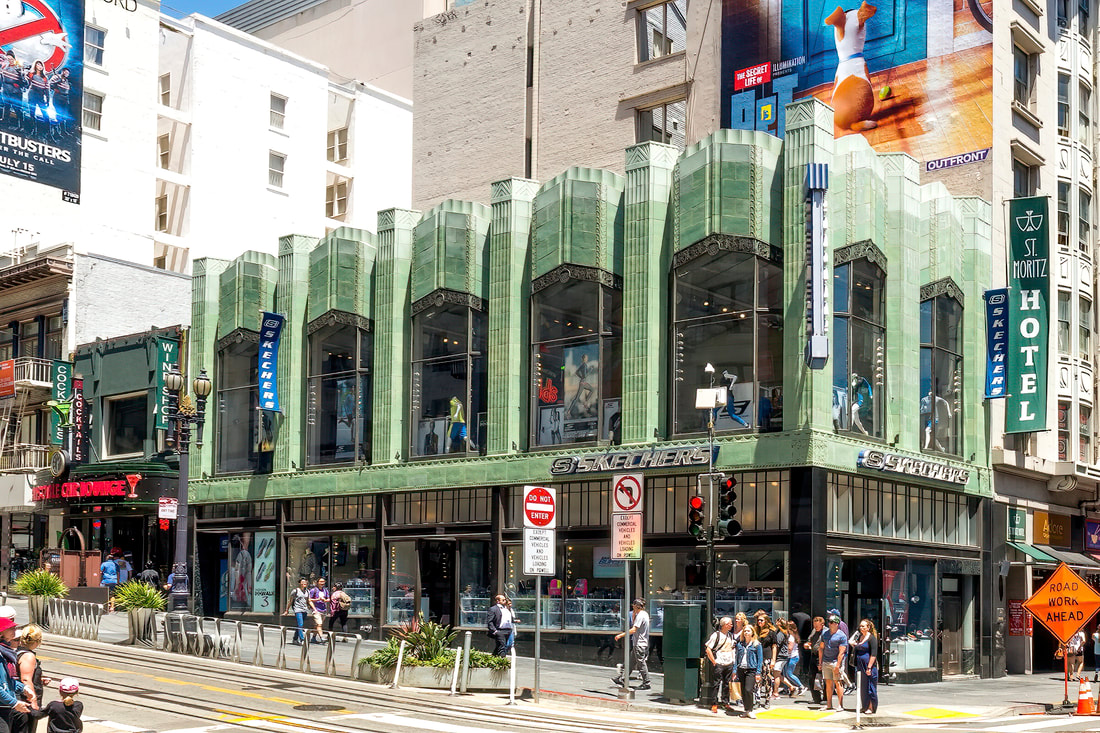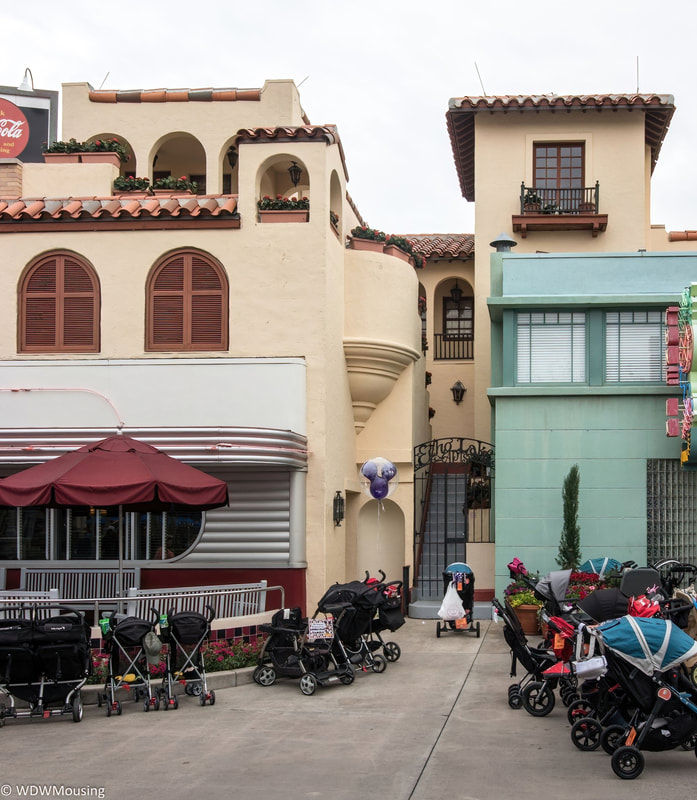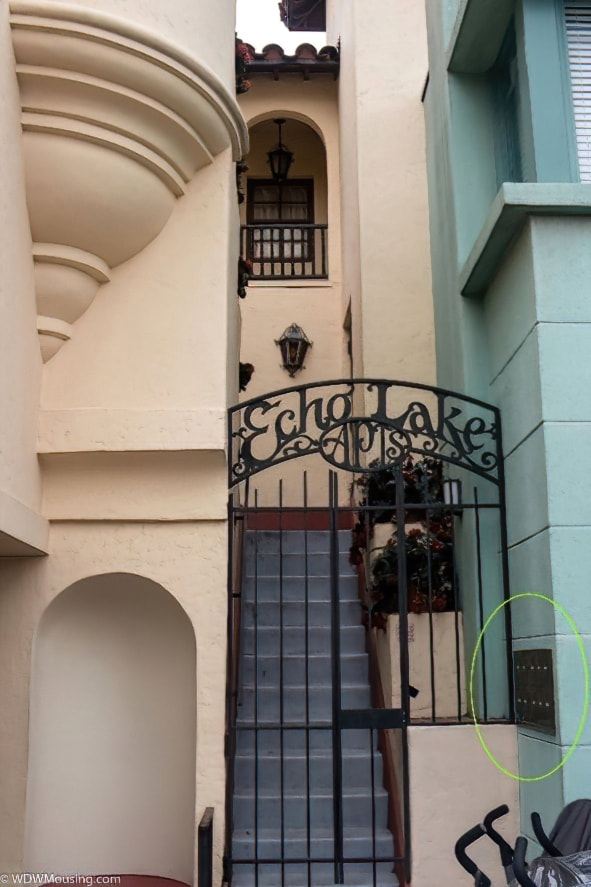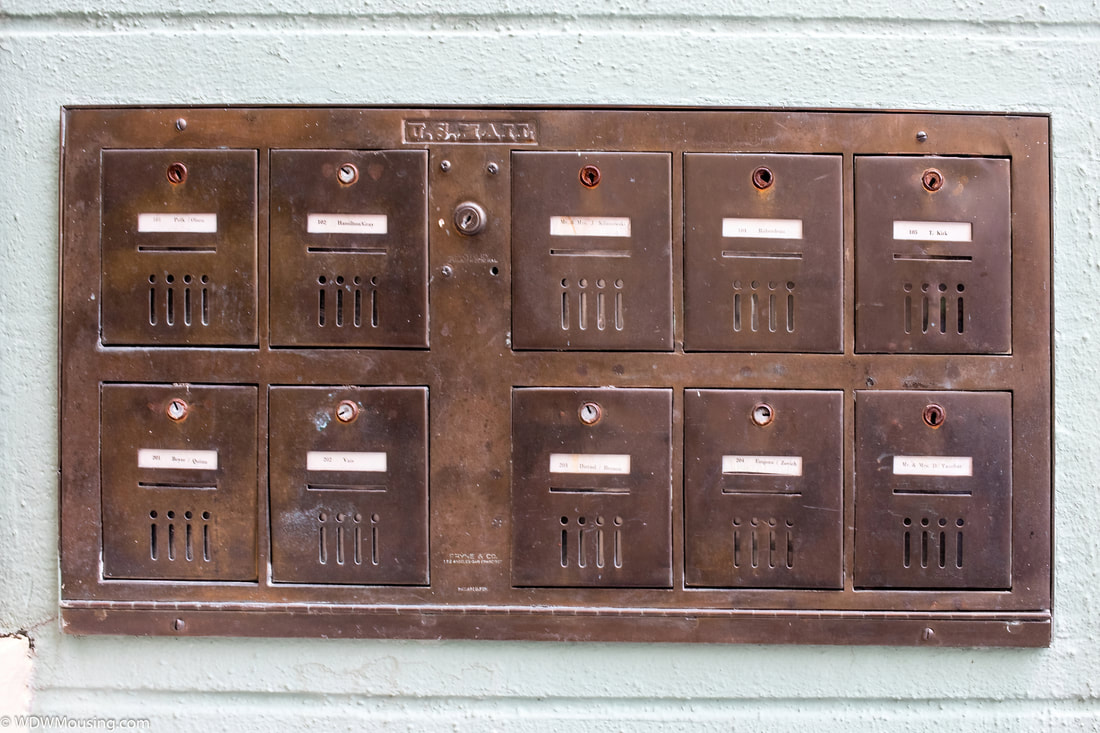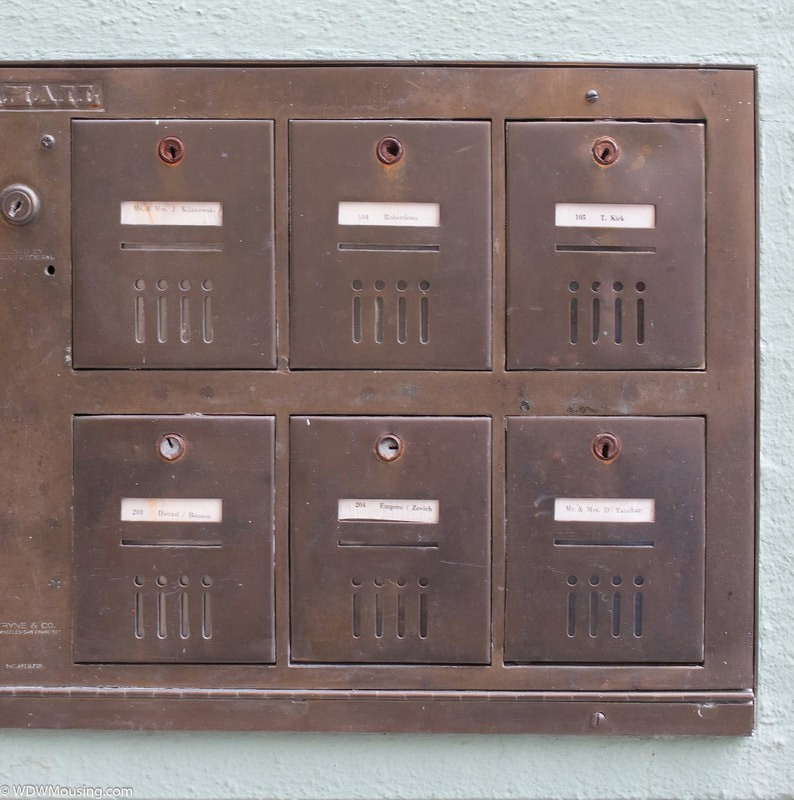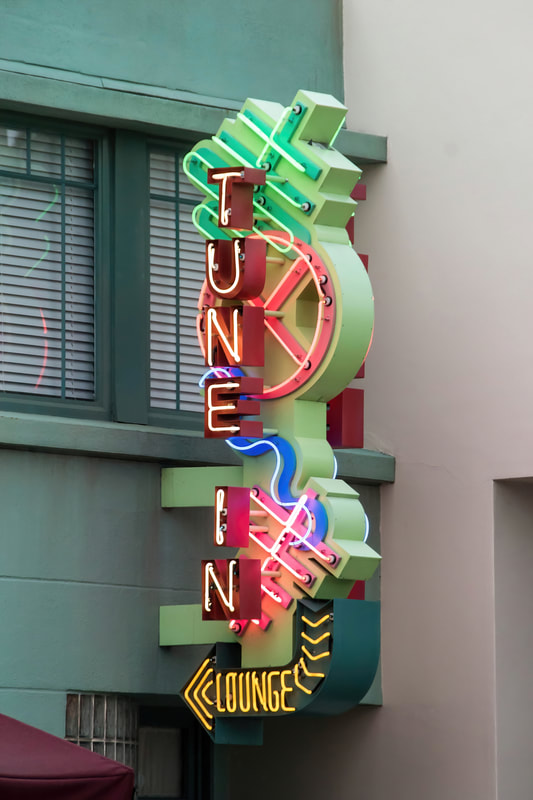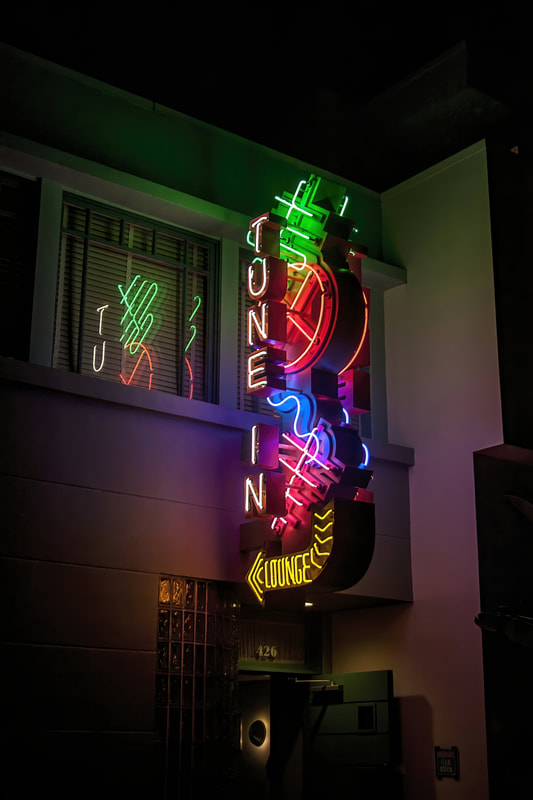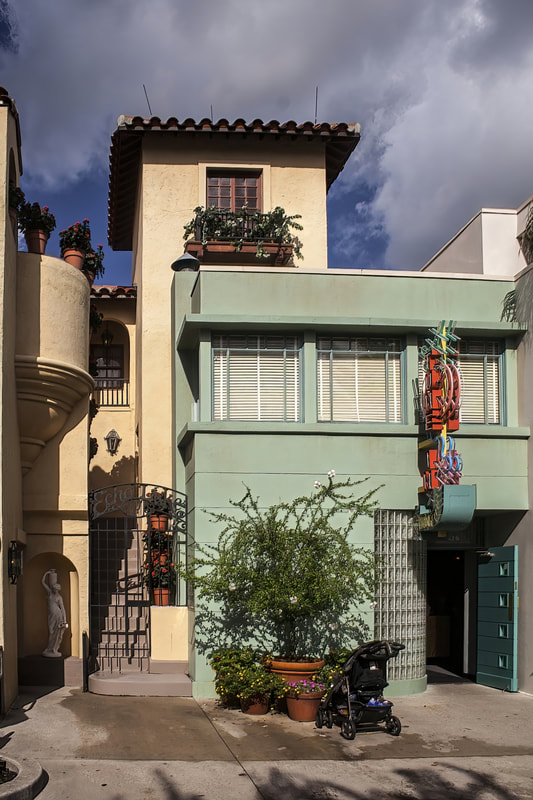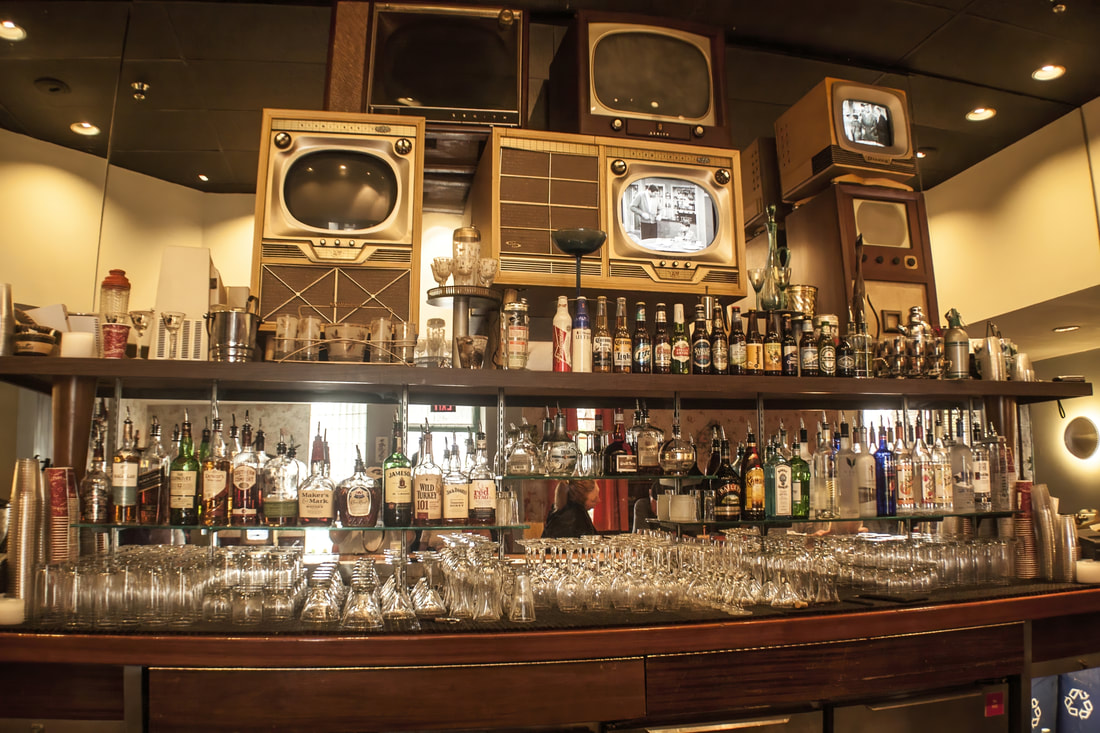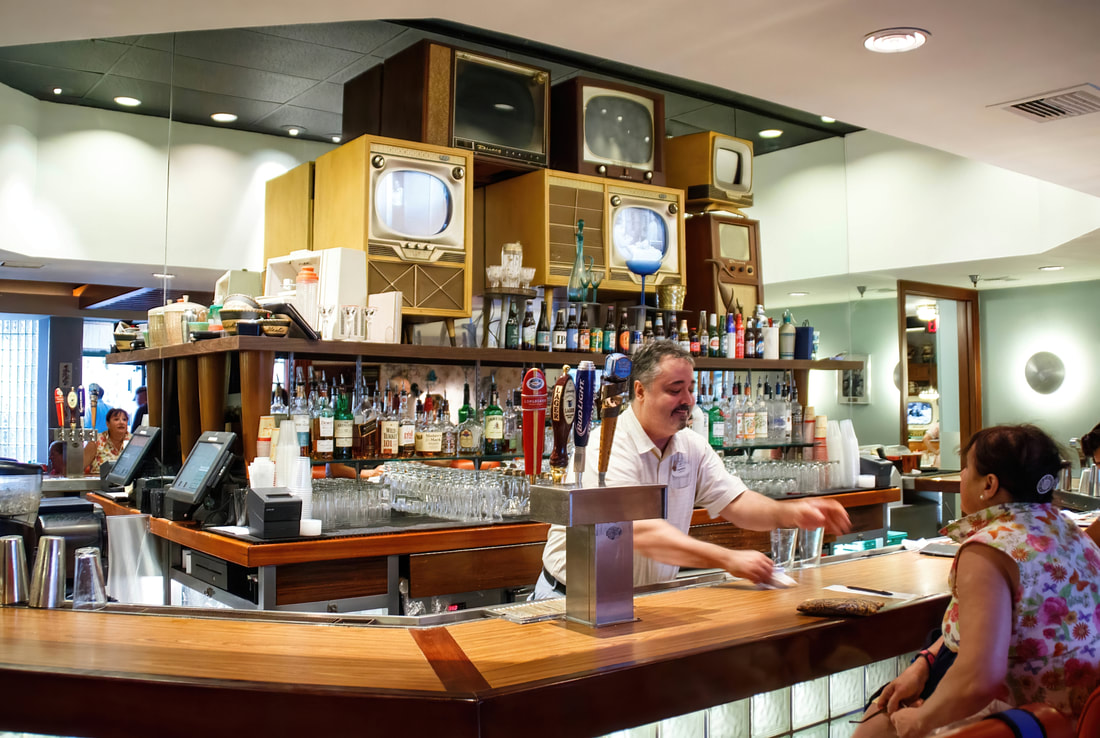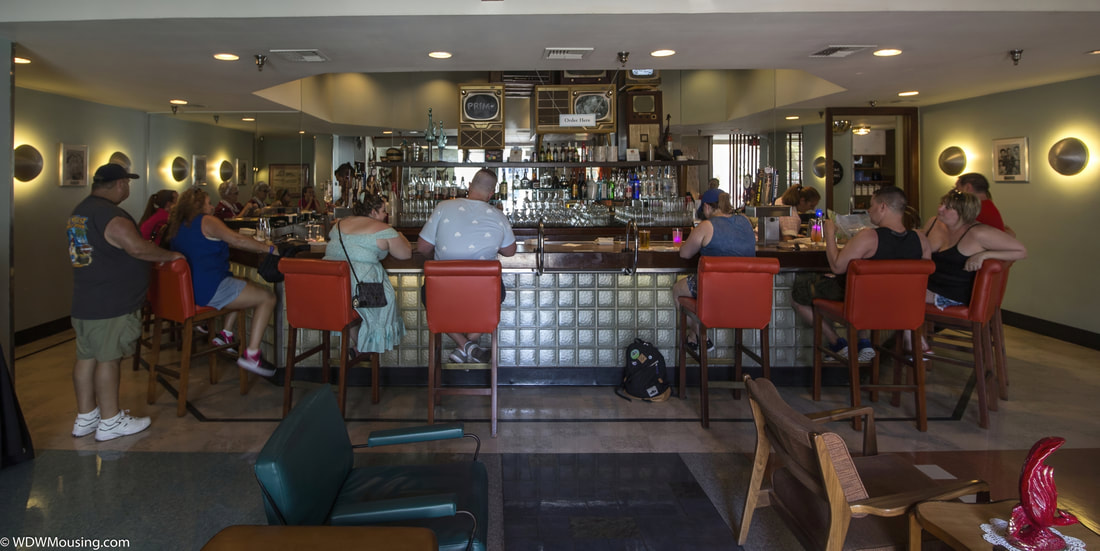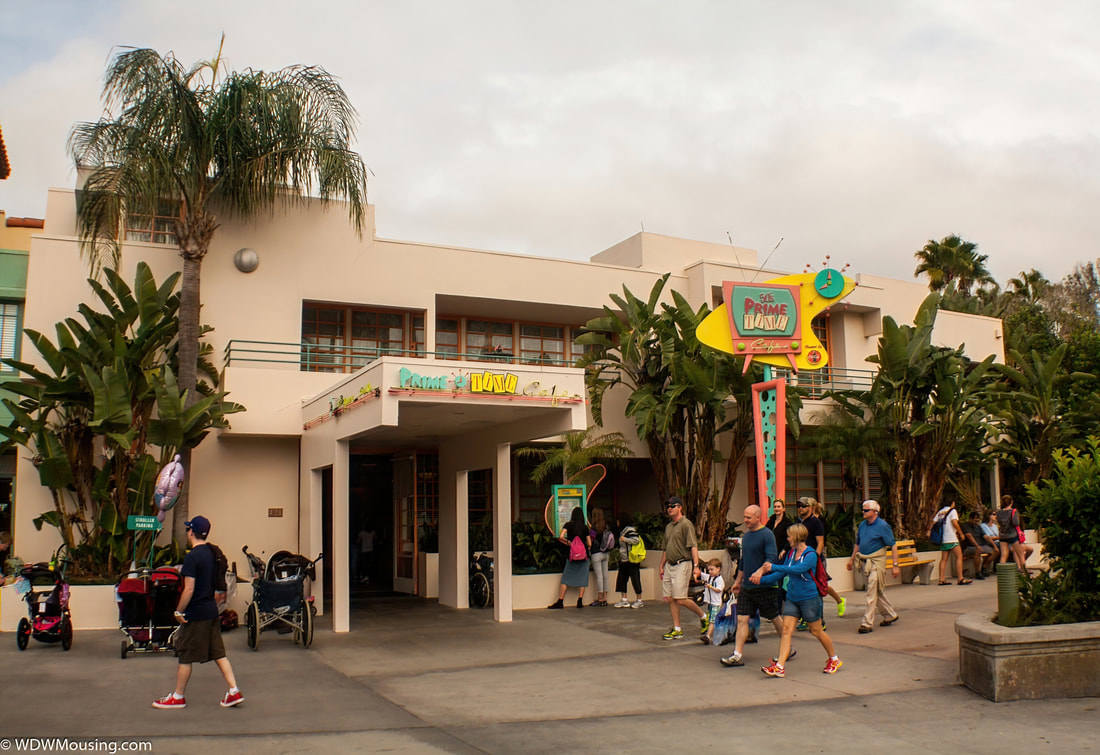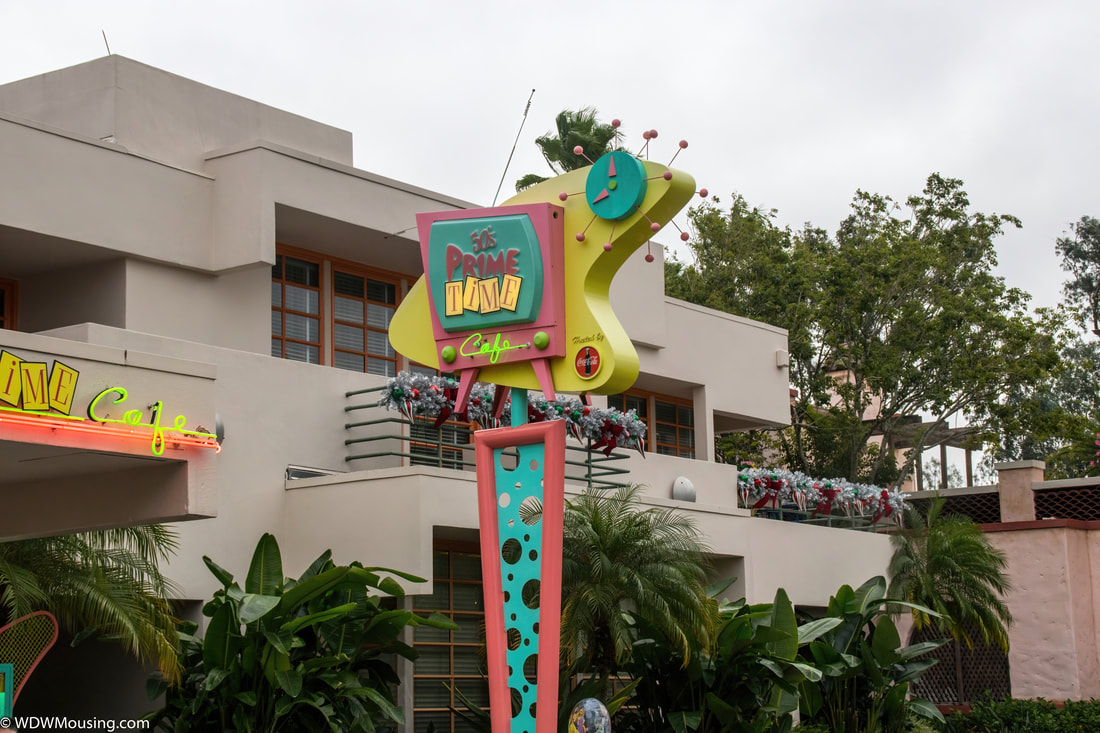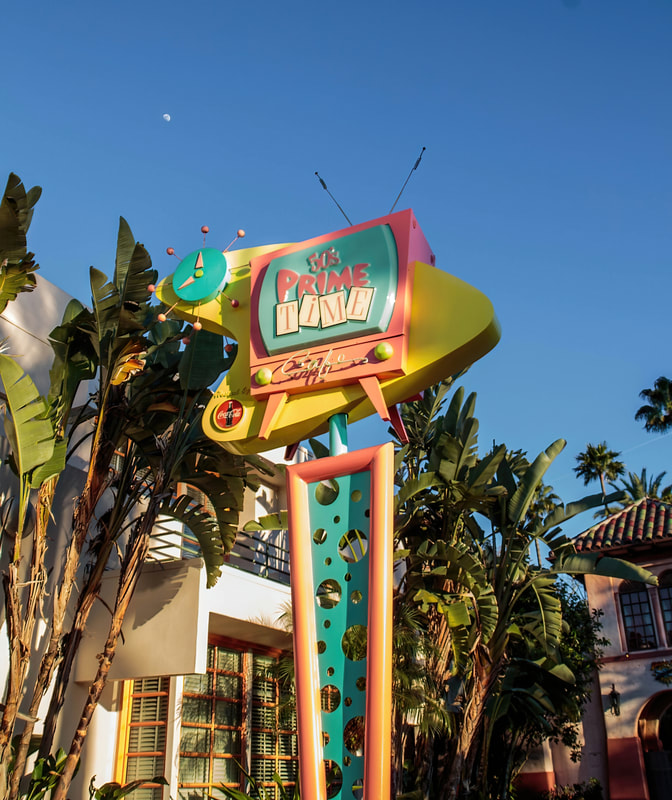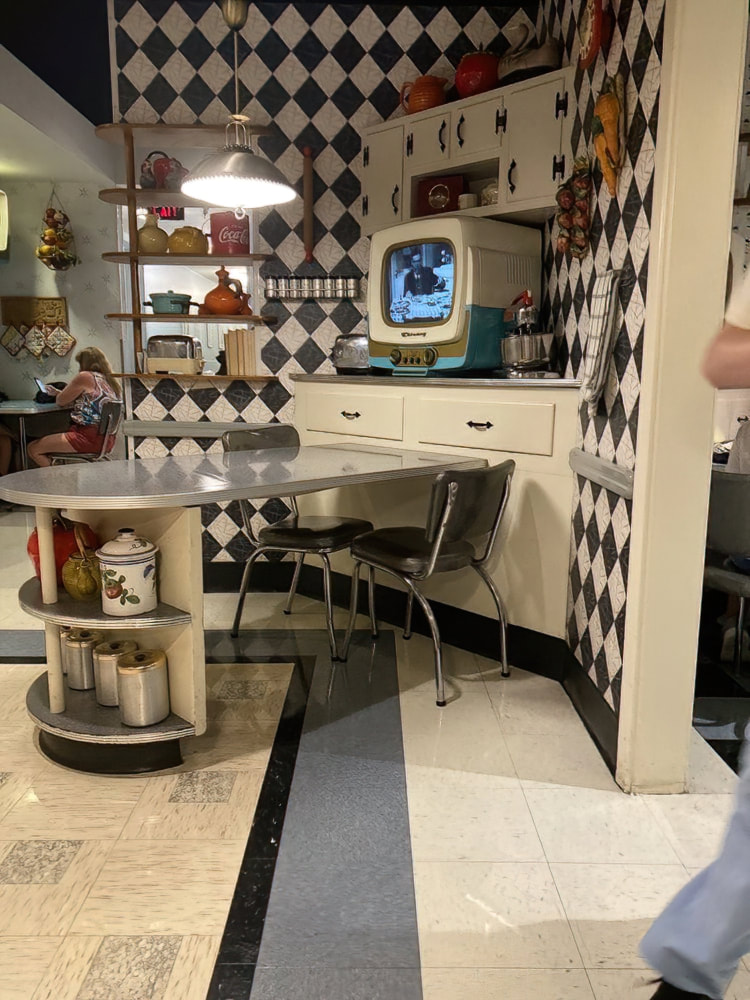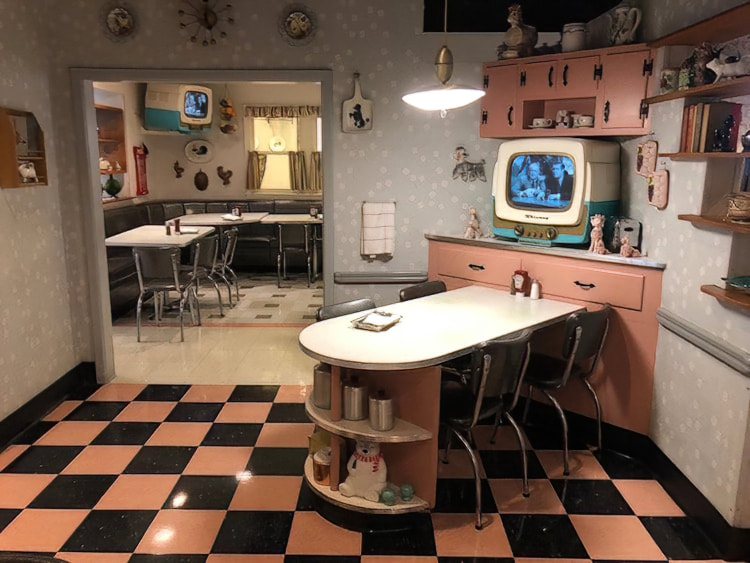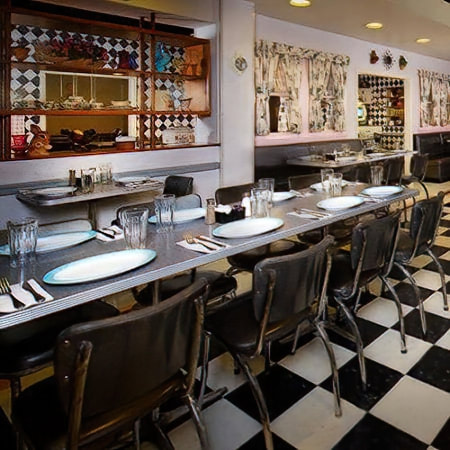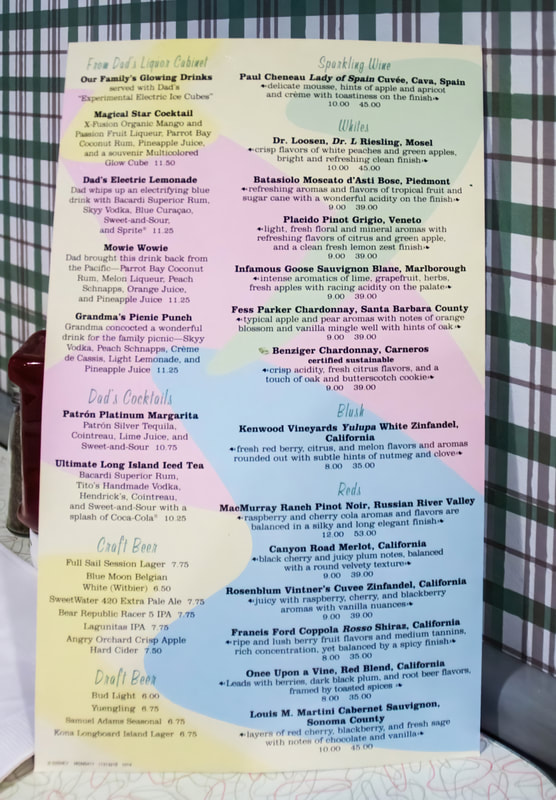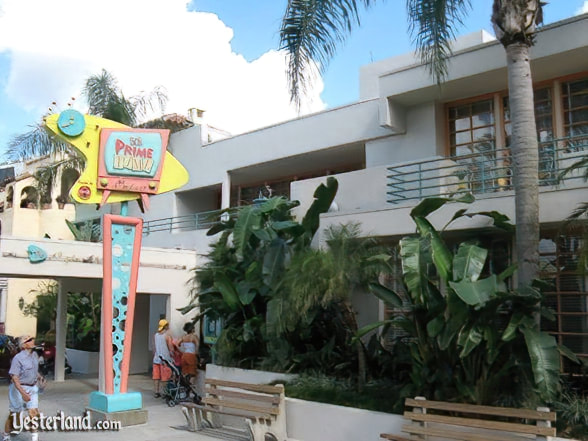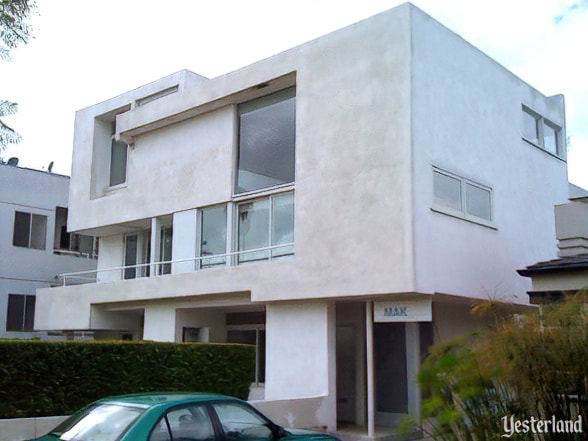Chapter 13 - Hollywood Studios - Echo Lake - Part 1 updated 6/19/23
Echo Lake History
Our tour of Hollywood Studios has now brought us to the Echo Lake area.
When Disney MGM Studios first opened in 1989, the area was referred to as “Lakeside Circle.”
Walt Disney’s original Los Angeles animation studio was in the Lake area on Kingswell Avenue which was about three miles northwest of the lake. Walt Disney’s Hyperion Street Studio, where Snow White and the Seven Dwarfs (1937) was animated, was about three miles to the north.
This area in Hollywood Studios was meant to be a homage to the real Echo Park. Hence the name change to Echo Lake.
In Los Angeles, Echo Lake, is located in the city’s Echo Park neighborhood. Just north of the Hollywood Freeway (US-101), the lake is bounded by Glendale Avenue on the west and Echo Park Avenue on the east. It too has a tall fountain and an island.
Echo Park Lake is an artificial lake, created in 1868 as Los Angeles Canal and Reservoir Co. Reservoir No. 4 to provide drinking water. In 1891, the City of Los Angeles acquired the reservoir and 33 acres.
The early development of the motion picture industry was centered around the Echo Park area, Mack Sennett’s Keystone Studios, which was located on Keystone Street (now part of Glendale Boulevard).
Sennett was known for his outstanding silent movie comedies, including those starring the frantic and inept Keystone Kops as well as Charlie Chaplin, and often used the Echo Park as the setting for some of those wacky comedies.
On Hollywood Studios’ Hollywood Boulevard, the Keystone Clothiers building stands at the entranceway to the Echo Park area as reference to that early filmmaker. (See Chapter 2 Hollywood Boulevard – Part 1)
Our tour of Hollywood Studios has now brought us to the Echo Lake area.
When Disney MGM Studios first opened in 1989, the area was referred to as “Lakeside Circle.”
Walt Disney’s original Los Angeles animation studio was in the Lake area on Kingswell Avenue which was about three miles northwest of the lake. Walt Disney’s Hyperion Street Studio, where Snow White and the Seven Dwarfs (1937) was animated, was about three miles to the north.
This area in Hollywood Studios was meant to be a homage to the real Echo Park. Hence the name change to Echo Lake.
In Los Angeles, Echo Lake, is located in the city’s Echo Park neighborhood. Just north of the Hollywood Freeway (US-101), the lake is bounded by Glendale Avenue on the west and Echo Park Avenue on the east. It too has a tall fountain and an island.
Echo Park Lake is an artificial lake, created in 1868 as Los Angeles Canal and Reservoir Co. Reservoir No. 4 to provide drinking water. In 1891, the City of Los Angeles acquired the reservoir and 33 acres.
The early development of the motion picture industry was centered around the Echo Park area, Mack Sennett’s Keystone Studios, which was located on Keystone Street (now part of Glendale Boulevard).
Sennett was known for his outstanding silent movie comedies, including those starring the frantic and inept Keystone Kops as well as Charlie Chaplin, and often used the Echo Park as the setting for some of those wacky comedies.
On Hollywood Studios’ Hollywood Boulevard, the Keystone Clothiers building stands at the entranceway to the Echo Park area as reference to that early filmmaker. (See Chapter 2 Hollywood Boulevard – Part 1)
Just like on Hollywood Boulevard, the buildings that surround Echo Lake are historic impressions of real facades from Los Angeles.
References:
References:
|
For current map go to:
|
Well, let’s start our tour by checking out Keystone Street. While heading down Hollywood Boulevard toward the Grauman’s Chinese Theater, make a left at the corner of Hollywood & Vine, then a right after the Keystone Clothier onto Keystone Street.
Holly-Vermont Reality Offices
|
As guests come around the corner and go beyond the Keystone Clothier Shop, they’ll pass a door that leads Holly-Vermont Reality Offices of Hollywood - Beverly Hills. When Walt and Roy Disney set up their first Studio in Los Angeles they rented room from Holly-Vermont Realty Company for ten dollars a month in 1923. It was here that they shot some of their Alice's Wonderland shorts in the early 1920s. In 1925, they needed more room, so they moved to a larger space next door at 4649 Kingswell Avenue. Then in 1926 Disney Studios moved to a new studio on Hyperion Avenue in 1926. The "For Rent" sign on the second floor window shows that Walt and Roy have moved out.
|
Notes:
Peevy's Polar Pipeline
|
Next to the Realty office is Peevy’s Polar Pipeline, featuring frozen Coca-Cola Concoctions, as well as various other frozen treats and slushies.
When the park opened in 1989, the location was known as Lakeside News, a newsstand that sold comic books, newspapers and other publications. Lakeside Newsstand was replaced by Peevy’s Polar Pipeline in 1991. The stand got its new name and theming from the 1991 Disney movie "The Rocketeer". In the film, The Rocketeer's sidekick is inventor/scientist A. "Peevy" Peabody. In recent years the stand has been operational on a seasonal basis. But there is a lot more about this stand then just the stand name and movie connection. In preparation for the film release, Imagineers added a few different items to the MGM-Hollywood Studios as a test run.
The Peevy’s location is filled with brilliant details right down to including vintage welding tanks. Take a careful look at the stand
|
We could dedicate an entire chapter just on the Rocketeer, but in this chapter we’re going to limit it to how it is interconnected with the opening plans for Disney-MGM Studios. We did however provide links for those interested in more below.
Rocketeer, Disney-MGM Studios and Disney World
The Rocketeer was Disney’s first attempt at a live action super hero movie. The Rocketeer was set in 1938 in the Hollywood “that never was and always will be”. With this tie to the times and 1930’s & 40’s theming of Disney-MGM Studios, The Rocketeer was a natural addition to the park. Here are some of the early Rocketeer tie-ins:
In Hollywood Studios
In the 1991, The Rocketeer used to fly above Disney-MGM Studios during Sorcery in the Sky, the nightly fireworks from 1990 to 1998. (more about the Sorcery in the Sky in an upcoming Hollywood Studios Chapter)
In the 1991, The Rocketeer used to fly above Disney-MGM Studios during Sorcery in the Sky, the nightly fireworks from 1990 to 1998. (more about the Sorcery in the Sky in an upcoming Hollywood Studios Chapter)
Rocketeer Gallery
The of Toy Story Pizza Planet Arcade (now Pizza Rizzo) was originally intended to be a Muppet restaurant. When that didn't work out, the location opened as a make-shift exhibit space with props and costumes from Disney's 1991 summer release, The Rocketeer. The next year, the gallery was rechristened Studio Showcase, and the mix of props was expanded to feature items from Honey I Blew Up the Kid, The Nightmare Before Christmas, and other films. Studio Showcase was a precursor to the AFI Showcase being added to the end of the Studios Backlot Tour. Once AFI was opened, this space became the Studio Arcade for a short time before finally becoming associated with the Toy Story films and the Toy Story Pizza Planet Restaurant.
The of Toy Story Pizza Planet Arcade (now Pizza Rizzo) was originally intended to be a Muppet restaurant. When that didn't work out, the location opened as a make-shift exhibit space with props and costumes from Disney's 1991 summer release, The Rocketeer. The next year, the gallery was rechristened Studio Showcase, and the mix of props was expanded to feature items from Honey I Blew Up the Kid, The Nightmare Before Christmas, and other films. Studio Showcase was a precursor to the AFI Showcase being added to the end of the Studios Backlot Tour. Once AFI was opened, this space became the Studio Arcade for a short time before finally becoming associated with the Toy Story films and the Toy Story Pizza Planet Restaurant.
Rocketeer Displays
In Backlot Tour
The Rocketeer’s made nightly appearances, for the summer of 1991, during Sorcery in the Sky, where he would fly around the Chinese Theater.
In addition, the Bulldog Cafe exterior set piece from the movie resided on the Studio Backlot for a number of years, it was part of the promotion for the upcoming release of the Rocketeer movie.
Note: In the film the Bulldog Café is located at nearby Chaplin Airfield. Chaplin Airfield was where the Bigelow Flying Circus performed and where Cliff found the jetpack that belonged to Howard Hughes. In the storyline Lucille one of the supporting character in The Rocketeer works at the Bulldog Cafe.
(More on the Rocketeer storyline in the links below.)
The Rocketeer’s made nightly appearances, for the summer of 1991, during Sorcery in the Sky, where he would fly around the Chinese Theater.
In addition, the Bulldog Cafe exterior set piece from the movie resided on the Studio Backlot for a number of years, it was part of the promotion for the upcoming release of the Rocketeer movie.
Note: In the film the Bulldog Café is located at nearby Chaplin Airfield. Chaplin Airfield was where the Bigelow Flying Circus performed and where Cliff found the jetpack that belonged to Howard Hughes. In the storyline Lucille one of the supporting character in The Rocketeer works at the Bulldog Cafe.
(More on the Rocketeer storyline in the links below.)
In Sci-Fi Dine-in
A location for original props from The Rocketeer is the Sci-Fi Dine-In Restaurant. Wander briefly around the theater and you may spot some of the props.
On the left side, down to the right and near the bottom is the black and gold front cover of the South Seas Club menu-secured under plexiglass. The South Seas Club was the scene of a showdown between the Rocketeer and villain Neville Sinclair and his thugs.
Wandering a little farther down, just before the entrance to the main dining area, high on the left wall is a rocketerman Helmet that was used in the film.
A location for original props from The Rocketeer is the Sci-Fi Dine-In Restaurant. Wander briefly around the theater and you may spot some of the props.
On the left side, down to the right and near the bottom is the black and gold front cover of the South Seas Club menu-secured under plexiglass. The South Seas Club was the scene of a showdown between the Rocketeer and villain Neville Sinclair and his thugs.
Wandering a little farther down, just before the entrance to the main dining area, high on the left wall is a rocketerman Helmet that was used in the film.
At Disney Springs
In Disney Springs, you can find reference to The Rocketeer in Jock Lindsey’s Hangar bar. Jock was, of course, Indiana Jones pilot from Raiders of the Lost Ark. If you look around Hangar Bar you’ll find lots of references to Indiana Jones, however, this is a pilot’s place and you can find reference to The Rocketeer here with a Bigelow’s Air Circus banner hanging behind the bar as well as poster.
This happens to be the same air circus at Chaplin Airfield where The Rocketeer takes to the skies in view of the public for the very first time.
This happens to be the same air circus at Chaplin Airfield where The Rocketeer takes to the skies in view of the public for the very first time.
|
At Disney’s Polynesian Resort
Trader Sam’s Grog Grotto in Disney’s Polynesian Village. Mounted on the wall, just beneath a painting of the Nautilus (from another film near and dear to my heart, 20,000 Leagues Under the Sea), is a menu from the South Seas Club. The South Seas Club an exclusive restaurant, where Neville Sinclair takes Jenny. Neville Sinclair, a Nazi agent, takes Jenny Blake to woo her in the hopes of getting close to Cliff (The Rocketeer) and stealing the Rocketeer’s jetpack. In the film this is when all of the action really starts to pick up with and leads to kidnappings, shootouts, gangsters, FBI agents, and, of course, a zeppelin that inevitably catches fire, and Howard Hughes is also in the film |
There are more throughout the Parks, but as we stated, we could fill an entire Chapter just on the Rocketeer. It is a great film, but it was not a major box office film for Disney.
If your interested in more on Rockeeter, check out the links below
Source:
If your interested in more on Rockeeter, check out the links below
Source:
- https://disney.fandom.com/wiki/The_Rocketeer
- https://therocketeer.fandom.com/wiki/Lucille
- https://allears.net/2013/11/18/jims-attic-where-in-the-world-is-the-rocketeer/
- https://societyofexplorersandadventurers.fandom.com/wiki/Cliff_Secord#Peevy.27s_Polar_Pipeline
- http://2719hyperion.blogspot.com/2011/04/rocketeer-parkeology.html
- Peevy's Polar Pipeline - The Mickey Wiki: Your Walt Disney World Encyclopedia!
- https://www.facebook.com/KeytotheKingdombook/posts/here-is-another-disney-deep-dive-into-the-disney-that-never-wasthe-two-pictures-/2238733119522149/
- https://thehobbitholeplusme.wordpress.com/2017/09/19/jet-packing-around-disney-world-looking-for-the-rocketeer/
- http://www.mainstgazette.com/2009/05/thermal-efficiency.html
- http://www.mainstgazette.com/2017/06/bigelows-air-circus.html
Roger Rabbit
In Chapter 8 – Sunset Boulevard – Part 1, we presented the interlinked history of Roger Rabbit and MGM/Disney Studios. Roger Rabbit was to be a large part in the original plans for
Hollywood Studios. But it didn’t happen.
As we discussed many references to Roger Rabbit are still located throughout Hollywood Studios. One example is above Peevy's Polar Pipeline, guests can find a billboard for Maroon Studios. This is reference to the studio that Roger and Jessica Rabbit worked for.
Hollywood Studios. But it didn’t happen.
As we discussed many references to Roger Rabbit are still located throughout Hollywood Studios. One example is above Peevy's Polar Pipeline, guests can find a billboard for Maroon Studios. This is reference to the studio that Roger and Jessica Rabbit worked for.
click on photo to enlarge.
As we walk further up Echo Park Dr., we come to the Glamour Salon and Cosmetic Dentistry Building.
Cosmetic Dentistry
Cosmetic Dentistry
|
Disney's Imagineers love to word play, an example of this is the directory listing for this Cosmetic Dentistry building, taking a second look.
The offices list offices on the second floor, above the glamour salon, for
This is a cosmetic dentistry office, since we are in Hollywood after all. So now the only question is which dentist sounds good to you? |
At the corner of Echo Park Dr. and Sunset Plaza, we encounter the Mayan architecture on the corner. We have discussed this in Chapter 2 - Hollywood Studios – Hollywood Blvd – Part 1. This ornate Mesoamerican Revival façade got its origin from the Mayan Theater that is located on South Hill St., Los Angeles. It was one of the three original corner entrances into the Keystone Clothiers building. Then it closed and fitted with an ATM. And finally back to an entrances into the Keystone Clothier.
click on photo to enlarge.
Let’s go back and check out the Imagineers took the architecture designs of the buildings on Keystone Street.
Architecture
Beginning with the building the features Peevy’s Polar Pipeline. The architectural inspiration for the façade of this building was a fire station on Pasadena Avenue in Lincoln Heights.
Built in 1940 and still in operation today, this fine example of Streamline Moderne architecture and is still a Los Angeles fire station today.
Architecture
Beginning with the building the features Peevy’s Polar Pipeline. The architectural inspiration for the façade of this building was a fire station on Pasadena Avenue in Lincoln Heights.
Built in 1940 and still in operation today, this fine example of Streamline Moderne architecture and is still a Los Angeles fire station today.
The next façade is the Cosmetic Dentistry Building.
This was inspired by a building on 6926 Melrose Ave., Los Angeles
The Rodney Gilliam Bldg. (also identified as Telesound Studio), is a late Streamline Moderne building (circa 1945). In the Disney version, the symmetrical front has been chopped in half and the center column has been eliminated.
It now serves as part of the Vista Del Mar program, which serves the needs of all children and families in our community by offering high-quality treatment programs for children with significant emotional, social, learning, and developmental disabilities.
The Rodney Gilliam Bldg. (also identified as Telesound Studio), is a late Streamline Moderne building (circa 1945). In the Disney version, the symmetrical front has been chopped in half and the center column has been eliminated.
It now serves as part of the Vista Del Mar program, which serves the needs of all children and families in our community by offering high-quality treatment programs for children with significant emotional, social, learning, and developmental disabilities.
|
At the end of the corner of Keystone Street is this ornate Mesoamerican Revival façade which got its origin from the Mayan Theater that is located on South Hill St., Los Angeles.
And we already discussed the architecture of the Mayan designed entrance to Keystone Clothiers several times; once above and then also in Hollywood Studio’s Chapter 2 – Hollywood Boulevard – Part 1. |
Now, we’ll head over to Hollywood & Vine,
|
Across for the Hollywood & Vine Restaurant is a small park. One of the benches advertises the Celebrity 5&10 Shop that's Hollywood Boulevard. (see Chapter 3 - Hollywood Boulevard - Part 2 or head to the Shop)
|
Hollywood & Vine Restaurant
Just as guests pass the around the corner of the Disney & Co. shop, they are on Vine St. As we head down Vine to your left is the Hollywood & Vine Restaurant.
Just as guests pass the around the corner of the Disney & Co. shop, they are on Vine St. As we head down Vine to your left is the Hollywood & Vine Restaurant.
Hollywood & Vine is a character dining restaurant in the Echo Lake area that offers buffets for lunch and dinner featuring characters from Disney Jr at breakfast, lunch and at dinner, Minnie Mouse and her friends host dinner parties every night. The characters are all day long, singing, dancing and interacting with guests.
Along the inside wall of Hollywood and Vine is a beautiful 42 foot by 8 foot mural depicting some of the highlights of the Hollywood area, including the Disney Studios and the Carthay Circle Theater.
History
- Hollywood & Vine opened in the on May 1, 1989. Originally the restaurant operated as a "buffeteria" style restaurant.
- In 1998, the restaurant was refurbished, reopening as Hollywood & Vine Cafeteria of the Stars. At this time, the restaurant became a character dining experience featuring Minnie and her friends.
- This incarnation of the Hollywood & Vine remained until March 23, 2003, when the characters were removed and eatery returned to a traditional family style meal.
- The removal of Minnie and other characters was short-lived however, as by 2005 characters had returned.
- On June 26, 2006, characters from the Playhouse Disney shoes JoJo's Circus and The Little Eisensteins began to appear at Hollywood & Vine for breakfast and lunch as part of the "Playhouse Disney's Play 'N Dine at Hollywood & Vine". They were later joined by Handy Manny.
- In 2010 Special Agent Oso replaced JoJo and Goliath at Hollywood & Vine.
- In 2011, Jake from Jake and the Neverland Pirates replaced Leo (from the Little Einsteins).
- This was followed by the addition of Sofia the First and Doc McStuffins in June 2014, replacing Special Agent Oso and June (also The Little Einsteins).
- Beginning in 2014, Disney began offering a special character meal called "Jedi Mickey" during Star Wars Weekends, which featured Mickey and his friends dressed in their Star Wars costumes.
- Beginning January 4, 2015 Disney began featuring Minnie's Seasonal Dine for dinner at Hollywood & Vine. This special character dining experience was "designed to celebrating the magic of the movies and the glamour of Hollywood.". True to its name, Minnie's Seasonal Dine changes its theme and menu depending on the season. Names for the seasonal dinner parties include: Minnie's Silver Screen Dine, Minnie's Springtime Dine, Minnie's Summertime Dine, Minnie's Halloween Dine and Minnie’s Holiday Fantasmic! Dine.
- On January 31, 2017, Disney announced that Minnie's Seasonal Dine would begin to offered for lunch as well as dinner, beginning May 14, 2017. Following this change, the Disney Junior Play ‘n Dine will continue to be offered during breakfast.
- Beginning May 13, 2018, Roadster Racers Goofy replaced Handy Manny at Hollywood & Vine.
Dining Characters
click on photo to enlarge
Dinner Theme
The theme changes seasonally for dinner. Dinner is called Minnie’s Seasonal Dine. Minnie is the host and the meal, costumes, decorations, etc. change for each season. There is the Spring Dine, Summertime Dine, Halloween Dine and Holiday Dine.
Check the website and the Park Guide for Season Minnie is celebrating, such the menu is always changing.
Current Menu
Click below to see Hollywood & Vine's current menu:
The theme changes seasonally for dinner. Dinner is called Minnie’s Seasonal Dine. Minnie is the host and the meal, costumes, decorations, etc. change for each season. There is the Spring Dine, Summertime Dine, Halloween Dine and Holiday Dine.
Check the website and the Park Guide for Season Minnie is celebrating, such the menu is always changing.
Current Menu
Click below to see Hollywood & Vine's current menu:
Note:
The Fantasmic Dinner Package allows you to enjoy Minnie’s Seasonal Dine and then you get access to the VIP section to Fantasmic.
The Fantasmic Dinner Package allows you to enjoy Minnie’s Seasonal Dine and then you get access to the VIP section to Fantasmic.
Resource:
- http://themickeywiki.com/index.php?title=Hollywood_%26_Vine
- https://www.disneylists.com/2017/06/disneys-hollywood-and-vine-what-you-need-to-know/?utm_source=DisneyList.com+Update&utm_campaign=4a53d88c01-DisneyLists_com_Update_11_9_18&utm_medium=email&utm_term=0_e09735652c-4a53d88c01-283624153
- https://disneyworld.disney.go.com/dining/hollywood-studios/hollywood-and-vine/
- https://www.disneyfoodblog.com/hollywood-and-vine-restaurant/
Above the Hollywood & Vine Restaurant is a window "Eddie Valiant. Private Investigations. All Crime. Surveillance. Missing Person." There is also a symbol of a magnifying glass with an eye in it, a reference to "private eyes."
|
Valiant was the detective in the film “Who Framed Roger Rabbit” played by Bob Hoskins. Next to Valiant's window is another window with the silhouette outline of Roger Rabbit bursting through the blinds and the window, just like in a famous scene in the original movie.
|
If guests can extrapolate the angle and the direction of Roger's outline, it goes in a direct line to the backstage building that once housed Disney Feature Animation Florida, which made two Roger Rabbit theatrical shorts, Roller Coaster Rabbit and Trail Mix-Up, and were preparing for more when trouble arose.
On the side of the Disney Feature Animation Florida building was a painted black silhouette of Roger, the same size and the same pose as the one from the window. |
|
Further down, over the Hollywood and Vine Restaurant, according to the backstory, the rooms were rented to individuals or businesses. One window features a small sign stating "No Actors" because at the time, actors were considered immoral, likely to have wild parties and probably skip out on paying the rent.
Originally, at the lower-left corner, was a sign that read "No Toons" and it was replaced by "No Actors" sign, as well as an insider joke since, during this time period, Valiant disliked toons because one had killed his brother. That "No Toons" sign was removed by a Disney executive who didn't understand the joke and insisted that Disney loved toons and that the location should be tested as a character breakfast area. However, the sign by itself is not the real punchline to the joke. |
|
Above the Hollywood & Vine Restaurant and next to Eddie Valiant’s is a window that is inscribed with JJ Topps Dance Studio.
We’re not sure, but this may be in reference to Michael Eisner’s talks with Topps Card Company about expanding into marketing Disney Trading Cards, since they already market Star Wars cards. Source: |
Bob Weis, Imagineer
Imagineers are the heart and soul of the Disney Magic. Walt Disney World and Disneyland wouldn’t be the same without them.
Disney has honored Bob Weis in a classic way. Bob has been honored with his very own window in Hollywood Studios! This is a tradition for legendary Imagineers and other folks who have made important contributions to Disney.
Imagineers are the heart and soul of the Disney Magic. Walt Disney World and Disneyland wouldn’t be the same without them.
Disney has honored Bob Weis in a classic way. Bob has been honored with his very own window in Hollywood Studios! This is a tradition for legendary Imagineers and other folks who have made important contributions to Disney.
|
The window reads,
Flower Street Pictures Bob Weis Studio Head Our Productions Entertain the World! The new window is located above Hollywood Vine. Disney's Hollywood Studios is a fitting location for Bob's window, near Hollywood & Vine Restaurant, as he was an integral part of the park's creation in the late 80's.
Bob Weis was a longtime Imagineer. Bob was instrumental in bringing Hollywood Studios to life back in the 80s. Bob Weis retired from the Walt Disney Company in early January 2023, forty-two years after joining WDI. Bob served most recently as Global Imagineering Ambassador and before that as president of Walt Disney Imagineering. As both a leader and creative, Bob saw countless attractions, lands, resort hotels, cruise ships, and theme parks come to fruition around the world. He was named president of Walt Disney Imagineering (WDI) in January 2016, after being responsible for all creative and design aspects of the Shanghai Disney Resort project. Starting at Walt Disney Imagineering in 1980, he had major creative roles with Disney’s Hollywood Studios and Tokyo DisneySea. He was the WDI executive vice president in 2007 to oversee development of Cars Land and other new attractions at Disney California Adventure. |
Architecture
The Art Deco restaurant Hollywood and Vine, the “Cafeteria to the Stars”, is modeled after a cafeteria that once stood at 1725 North Vine, near Hollywood Blvd. Before the dawn of fast food, these cafeterias provided actors (and Walt and Roy as well) with inexpensive and varied choices.
The Art Deco restaurant Hollywood and Vine, the “Cafeteria to the Stars”, is modeled after a cafeteria that once stood at 1725 North Vine, near Hollywood Blvd. Before the dawn of fast food, these cafeterias provided actors (and Walt and Roy as well) with inexpensive and varied choices.
The turquoise-blue Art Deco façade on the Hollywood & Vine restaurant looks like something you would find in the real Hollywood. But you probably won’t.
The inspiration comes from a green Art Deco building in San Francisco. Located a block from Union Square at 200 Powell Street (at O’Farrell Street), the building was originally built in 1913, but its stunning Art Deco façade is the result of a 1933 remodel.
The building in San Francisco has two stories above ground, but for more than four decades, it was most famous for what was below street level—the legendary George Mardikian’s “Omar Khayyam’s” Restaurant. The building is now a three-level, Skechers footwear and clothing store.
Compare the top of the façade on the Disney version with the real building. The Disney version is essentially sheared flat on top, while the real building has an interesting parapet. That’s how the real building looked in the 1980s. The parapet had been removed in the 1970s and but was restored in 2006.
Research:
The inspiration comes from a green Art Deco building in San Francisco. Located a block from Union Square at 200 Powell Street (at O’Farrell Street), the building was originally built in 1913, but its stunning Art Deco façade is the result of a 1933 remodel.
The building in San Francisco has two stories above ground, but for more than four decades, it was most famous for what was below street level—the legendary George Mardikian’s “Omar Khayyam’s” Restaurant. The building is now a three-level, Skechers footwear and clothing store.
Compare the top of the façade on the Disney version with the real building. The Disney version is essentially sheared flat on top, while the real building has an interesting parapet. That’s how the real building looked in the 1980s. The parapet had been removed in the 1970s and but was restored in 2006.
Research:
“Echo Lake” Apartments
The wedged between the Hollywood & Vine restaurant and the Tune-In Lounge are the Echo Lake apartments.
Imagineers are some of the most important people in the Disney Company. The Imagineers have come up with such a magical place for all of us to enjoy.
Unfortunately for most Imagineers they never get the recognition they truly deserve. Disney fans are familiar with people like Marty Sklar, Joe Rhode, X. Attencio, Bob Gurr, etc. but they have no idea who Hamilton or Gray are.
The wedged between the Hollywood & Vine restaurant and the Tune-In Lounge are the Echo Lake apartments.
Imagineers are some of the most important people in the Disney Company. The Imagineers have come up with such a magical place for all of us to enjoy.
Unfortunately for most Imagineers they never get the recognition they truly deserve. Disney fans are familiar with people like Marty Sklar, Joe Rhode, X. Attencio, Bob Gurr, etc. but they have no idea who Hamilton or Gray are.
There is an overlooked area in between the restaurants 50's Prime Time Cafe and Hollywood and Vine.
In between these two restaurants you will find a staircase (see picture to the left) which shows the entrance to the Echo Lake Apartments. A quick glance and it appears that there isn't a lot to see. However, with further investigation to the right of the gate there is a group of mail slots with several different names written upon them.
The names written here are actually names of the Imagineers that helped create the Echo Lake section of Disney's Hollywood Studios.
In between these two restaurants you will find a staircase (see picture to the left) which shows the entrance to the Echo Lake Apartments. A quick glance and it appears that there isn't a lot to see. However, with further investigation to the right of the gate there is a group of mail slots with several different names written upon them.
The names written here are actually names of the Imagineers that helped create the Echo Lake section of Disney's Hollywood Studios.
Here are the names on the mailboxes and who they are:
In fact, whenever you see random names written throughout Walt Disney World you can often bet that the names may belong to the Imagineers that helped create that specific area of the park!
Source:
- Apartment 101: Polk/Olson- This is a reference to Imagineer's John "Robin Polk and John Olson.
- Apartment 102: Hamilton/Gray- This references D. De Gray, a graphic designer at Walt Disney Imagineering.
- Apartment 103: Mr and Mrs Kilankowski- This references Joe Kilankowski, a Senior Architect at Walt Disney Imagineering.
- Apartment 104: Roberdeau - This references John Roberdeau Drury, a former Design Director at Walt Disney Imagineering.
- Apartment 105: T. Kirk- This references Tim Kirk, an Imagineering Design Director.
- Apartment 201: Beyer/Quinn- This references Steve Beyer, a Senior Concept Designer at Walt Disney Imagineering.
- Apartment 202: Vais- This references Lei Vais, an artist who worked on the then Disney-MGM Studios
- Apartment 203: Dietzel/Benson- This references Barbara Dietzel, who worked on the 50s Prime Time Cafe.
- Apartment 204: Empero/Zovich- This references engineer Tami Empero, as well as John Zovich, who was the Chief Engineer of EPCOT Center.
- Apartment 205: Mr and Mrs D. Yanchar- This references Dave Yanchar, an Imagineer
In fact, whenever you see random names written throughout Walt Disney World you can often bet that the names may belong to the Imagineers that helped create that specific area of the park!
Source:
Architecture
The inspiration for the Hollywood Studios Echo Lake Apartment facade can be found in the Fairfax District.
The façade wedged between the Hollywood & Vine restaurant and the Tune-In Lounge is based on Los Angeles-area Spanish Colonial Revival apartment buildings from the 1920s, such as those in the Fairfax District. The narrow façade appears not to be based on one particular building, but shows off architectural elements from the style and period.
The example above is an apartment house built in 1929 on North Orange Grove Avenue in the Fairfax District. With its sconce-like ornament under the window echoing the sconce-like landing on the Disney façade, its wrought iron railings, its tower topped by a tile roof, and its recessed door echoing the niche.
Resource:
The façade wedged between the Hollywood & Vine restaurant and the Tune-In Lounge is based on Los Angeles-area Spanish Colonial Revival apartment buildings from the 1920s, such as those in the Fairfax District. The narrow façade appears not to be based on one particular building, but shows off architectural elements from the style and period.
The example above is an apartment house built in 1929 on North Orange Grove Avenue in the Fairfax District. With its sconce-like ornament under the window echoing the sconce-like landing on the Disney façade, its wrought iron railings, its tower topped by a tile roof, and its recessed door echoing the niche.
Resource:
Tune-In Lounge
This lounge is a little hideaway tucked between Hollywood & Vine and 50’s Prime Time Café, which features a full bar. It serves both restaurants. The décor is a 50’s living room, from the porcelain vases and figurines to the faux wood paneling and pastel furniture, Tune-In Lounge represents everything that was a home living room in the 50s. There are several TV’’s over the bar that show old, of course 50’s, shows clips from such as Leave it to Beaver and the original Mickey Mouse Club.
Background:
50’s Prime Time Café
Next to the Tune-In Lounge is the 50’s Prime Time Café. Actually the lounge is the waiting area for the Café.
click on photo to enlarge
50’s Prime Time Cafe is a table service restaurant that serves classic American comfort food such as chicken pot pie, pot roast, traditional meatloaf, a variety of desserts and beverages.
Black-and-white TVs play vintage sitcom clips, such as Leave It to Beaver and Topper, while you wait for your entrées. The waitresses dress similarly to Leave It to Beaver character June Cleaver, and each acts as though she is the mother of the guests she is serving.
Black-and-white TVs play vintage sitcom clips, such as Leave It to Beaver and Topper, while you wait for your entrées. The waitresses dress similarly to Leave It to Beaver character June Cleaver, and each acts as though she is the mother of the guests she is serving.
click photo to enlarge
The menu isn’t the only part of the restaurant themed to the 1950s–the restaurant itself looks like a 1950s home, and “mom” and your other relatives are actually on hand to serve your meal to you.
Guests order dessert from a menu shown on GAF View-Master reels.
Just a Note: When visiting this restaurant, there are several thing’s guests will want to be sure to do, like keep your elbows off the table, eat all of your veggies, chew with your mouth closed, and if you visit the restroom, pay attention while washing your hands.
For the current menus:
More Info:
Guests order dessert from a menu shown on GAF View-Master reels.
Just a Note: When visiting this restaurant, there are several thing’s guests will want to be sure to do, like keep your elbows off the table, eat all of your veggies, chew with your mouth closed, and if you visit the restroom, pay attention while washing your hands.
For the current menus:
More Info:
- https://www.wdwinfo.com/wdwinfo/dining/diningdetail.cfm?restaurant.id=113
- https://www.themouseforless.com/walt-disney-world/dining/menus/50s-prime-time-cafe-menu/
- https://www.disneyfoodblog.com/50s-prime-time-cafe/
- https://touringplans.com/hollywood-studios/dining/50s-prime-time-cafe
- https://www.wdwkingdom.com/50s-prime-time-cafe-hollywood-studios-echo-lake-dining/
- https://en.wikipedia.org/wiki/50%27s_Prime_Time_Caf%C3%A9
- https://www.disneytouristblog.com/50s-prime-time-cafe-review/
Architecture
At the 50’s Prime Time Cafe, guests sit in residential kitchen nooks of the 1950s. Black-and-white televisions show clips from programs from that era. Mom serves her famous meatloaf, while Dad pours drinks from his liquor cabinet in the family room, a.k.a. the Tune-In Lounge.
Considering the restaurant’s home-in-the-1950s theme, the Imagineers faced a challenge. It really needed to be a residential structure, not a commercial building. It had to fit into the 1930s time period of that part of the park. And it had to set the stage for an eatery themed to the 1950s.
Once again, the Imagineers were up to the challenge. Their inspiration came from Modernist residences of the 1930s, as designed by pioneering modern architects such as Richard Neutra and Rudolph M. Schindler. Although the 50’s Prime Time Cafe does not appear to be modeled after a single structure, it uses architectural features that were bold in the 1930s and still looked contemporary in the 1950s.
The photo above shows the Pearl M. Mackey Apartments—designed by Rudolph M. Schindler and built 1939—at 1137 South Cochran Avenue in Los Angeles. It’s now owned by the Republic of Austria which uses it to house two artists and two architects for six month residencies in cooperation with the MAK-Austrian Museum of Applied Arts / Contemporary Art in Vienna.
Resource:
Considering the restaurant’s home-in-the-1950s theme, the Imagineers faced a challenge. It really needed to be a residential structure, not a commercial building. It had to fit into the 1930s time period of that part of the park. And it had to set the stage for an eatery themed to the 1950s.
Once again, the Imagineers were up to the challenge. Their inspiration came from Modernist residences of the 1930s, as designed by pioneering modern architects such as Richard Neutra and Rudolph M. Schindler. Although the 50’s Prime Time Cafe does not appear to be modeled after a single structure, it uses architectural features that were bold in the 1930s and still looked contemporary in the 1950s.
The photo above shows the Pearl M. Mackey Apartments—designed by Rudolph M. Schindler and built 1939—at 1137 South Cochran Avenue in Los Angeles. It’s now owned by the Republic of Austria which uses it to house two artists and two architects for six month residencies in cooperation with the MAK-Austrian Museum of Applied Arts / Contemporary Art in Vienna.
Resource:
We've started our tour of Echo Lake, checked it's history, examined some of the backgrounds and looked at the architectures of the facades in the area. In the next Chapter we'll head around the Lake and check out the other attractions.
|
|
Afterword:
WDWMousing.com is designed to be a tour of Walt Disney World through photos. We have been to Walt Disney World countless times over the past 25 years and accumulated a magnitude of photos in that time. This website is an intention to combine two of our favorite pastimes, Walt Disney World and photography, and provide an insightful pictorial tour. While doing so, we've done an extensive research of the internet and literary sources for background information on each area and attraction. The information is available, but most bits and pieces are scattered all over. WDWMousing doesn't intend to rewrite the stories, legends or data, but to try and collect it into one location with reference and links to the original articles and authors. And giving rightful credit. We've stumbled through quite a bit of mis-information, most of which came to life by fans because the origins were lost, forgotten or no one seems to remember. Over the past 25 years we've also lost most of the great Imagineers that helped develop, design and build the original concepts of Walt Disney World. So we believe it's extremely important to make sure that their efforts, intentions, details and creativity in making this Happiest Place on Earth isn't lost. So we ask for feedback, insights, and suggestions. Thank you WDWMousing |








